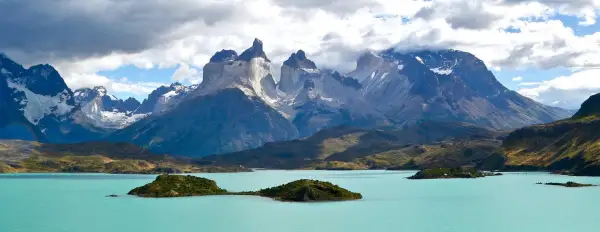Small Group Experiential Travel
Tour Code
BR6
Start
Manaus (MAO)
End
Santiago (SCL)
Tour type
Cultural
Max Group Size
18
When To Go
Oct
Activity Level
1 - Light
Overnight in
Buenos Aires, Mendoza, Ushuaia, El Calafate, Rio de Janeiro, Brasilia, Manaus, Santiago, Puerto Varas, Bariloche, Torres Del Paine, Iguacu Falls, Pantanal
- Overview
- Info & Inclusions
- Itinerary
- Map & Hotels
- Photos
- Dates & Prices
Highlights
- Rio de Janeiro-'the marvelous city'
- Amazon adventures
- The Pantanal-South America's wildlife marvel
- Thundering Iguacu Falls
- Beagle Channel Cruise
- Perito Moreno & Uppsala Glaciers
- Exploring Torres del Paine National Park
Description
On our Chile, Brazil & Argentina tour there's so much to see and do in these three spectacular South American countries, it's tough to fit it all into a time-frame of a month.
Our adventure exploring the true faces of Brazil, Argentina and Chile begins in Manaus, the capital and commercial hub of the Amazonas region in Brazil.
We glide up one of the largest rivers in the world, the mighty Amazon, and through the largest rainforest on the planet; exotic, dream-like sceneries make this portion of the tour an experience never to be forgotten.
We travel to the Pantanal, wherein lies the greatest concentration of wildlife in South America, then on to Rio de Janeiro, whose attractions are so great in number and quality that we need a few days to explore them.
En route to Iguazu Falls, where we cross into Argentina, we travel along winding roads in beautiful hill country and visit quaint colonial towns.
We fly to Buenos Aires to see the numerous sights of interest in this glittering, cosmopolitan city, whereupon we turn south and head for the desolate, glacier-riddled Patagonia to witness the natural world at its best.
From sub-Antarctic rainforests, through breathtaking vistas of fjord-like lakes and streams, and to the slopes of gargantuan glaciers and icebergs, our tour through Argentina leaves no topographical feature unexplored.
We then cross into Chile and drive to the wondrous Torres del Paine National Park, perhaps the finest national park on the continent, before travelling to cities and villages at foothills of the magnificent Andes to enjoy colourful markets and sights.
We end our tour in the lively Chilean capital city, Santiago.
Our adventure exploring the true faces of Brazil, Argentina and Chile begins in Manaus, the capital and commercial hub of the Amazonas region in Brazil.
We glide up one of the largest rivers in the world, the mighty Amazon, and through the largest rainforest on the planet; exotic, dream-like sceneries make this portion of the tour an experience never to be forgotten.
We travel to the Pantanal, wherein lies the greatest concentration of wildlife in South America, then on to Rio de Janeiro, whose attractions are so great in number and quality that we need a few days to explore them.
En route to Iguazu Falls, where we cross into Argentina, we travel along winding roads in beautiful hill country and visit quaint colonial towns.
We fly to Buenos Aires to see the numerous sights of interest in this glittering, cosmopolitan city, whereupon we turn south and head for the desolate, glacier-riddled Patagonia to witness the natural world at its best.
From sub-Antarctic rainforests, through breathtaking vistas of fjord-like lakes and streams, and to the slopes of gargantuan glaciers and icebergs, our tour through Argentina leaves no topographical feature unexplored.
We then cross into Chile and drive to the wondrous Torres del Paine National Park, perhaps the finest national park on the continent, before travelling to cities and villages at foothills of the magnificent Andes to enjoy colourful markets and sights.
We end our tour in the lively Chilean capital city, Santiago.
Price Includes
- Breakfast and most dinners (hotels & local restaurants) daily
- Some lunches.
- All accommodation, transport, sightseeing and entrance fees for sites noted as 'visited' in the detailed itinerary.
- Gratuities for local guides, drivers, restaurant staff, porters.
- Airport transfers for land & air customers and for early arriving / late departing land & air customers who book their extra hotel nights through us.
Exclusions
- International airfare to/from the tour.
- Tour Leader gratuity, most lunches, drinks, personal items (phone, laundry, etc), departure taxes, domestic and international air taxes (if applicable), visa fees.
- Airport transfers for Land Only customers.
- Optional trip cancellation insurance.
- Our post-reservation trip notes offer further guidance on optional meal costs, shopping, visas, and locally paid departure taxes.
Trip Info
- Seasonality and Weather:
BRAZIL
November will be warmer and more humid, but not as hot as summer months (Jan / Feb). Short tropical rainstorms occur throughout the year but they should not adversely affect travel plans.
AMAZON: in the rainy season, which roughly runs from mid-December to mid-May, the temperature is a bit cooler than the June-December dry season. The average daytime temperature in the rainy season is usually in the mid-80's [F] with nighttime lows in the mid 70's to high 60's. June-December dry season. The daytime temperature can go up to the mid-30's C (90's F) though there is much variability and cool days are common. Night-time temperatures are usually in the mid-20's C (70's F), though there are also some very cool nights.
PANTANAL: November in the Pantanal heralds the very beginning of the rainy season. February is the rainy season, which sounds negative, but it is actually a beautiful, green time of birds and excursions by boat or canoe. August is the middle of the dry season and is a very good time for this region.
ARGENTINA / CHILE
Weather conditions can vary greatly from place to place. Most of our time is spent in the south where conditions can be very changeable at any time of year. We visit in the Austral summer (Nov-Mar), when Buenos Aires and Santiago are hot and Patagonia is at its warmest. That said you must be prepared for cold, windy, possibly rainy conditions. November tends to be less windy than mid-summer (Jan). - Transport and Travel Conditions:
Road transport by private air-conditioned motor coach, 24-36 seats depending on ultimate group size (see 'group size'). Internal flights via scheduled local carriers. Numerous optional walking opportunities and walking tours on uneven surfaces. Several internal flights via domestic carriers.
Our difficulty "Level 1" rating for this trip refers to the comfort of our transport and accommodation and the lack of physicality in terms of walking. That said, this is a busy program with lots of moving around and full days of travel and sightseeing. You must also be prepared for the possibility of some early starts, walks at various points of interest and some short walks to dinner, and heat at some locations. Our sightseeing in towns and cities, as well as national parks, are also conducted on foot at a leisurely pace. Though we try to minimize long road journeys by utilizing internal air connections, we still have some full days of travel. Related to air travel, you must be prepared to manage your own luggage at airports. This tour does not travel to any region considered "high altitude."
Am I suitable for this tour? Please refer to our self-assessment form - Accommodation:
Well-located, heated/air-conditioned, mid-range (3-star) hotels with en suite toilet and bath throughout (probably shower only). Single rooms are limited and likely smaller than doubles. Porter service is usually available though you should be independent with your luggage, especially at airports.
Pantanal lodge: Private bathrooms, hot water, screened windows, ceiling fans, air- conditioning, 110 volt outlets. Amazon lodge: Rustic bungalows in a preserved forest area with typical regional architectural design, with screened windows. Hot water, fan and air-conditioning. - Activity Level: 1
No particular physical activity is involved other than town/city walks and short walks to dinners and sites of interest, some of which are large.
To learn more about the Activity levels, please visit our tour styles page. - Staff and Support:
Tour Leader, driver, local naturalist guides. - Group Size:
Maximum 18 plus Tour Leader
Download Itinerary
- Day 1:Arrive in ManausToday we arrive in Manaus, gateway to the Amazon.
Amazonas is by far the largest of Brazil's states, covering an area that is almost a quarter of the national territory. Half of the Amazon River's 6275 km (4,000 mile) length is in Brazil with some 100-plus tributaries. Standing on the shores of the Rio Negro, 1500 km (900 miles) upriver from Belem and the point where the Amazon reaches the Atlantic, Manaus was originally a Portuguese settlement where a fort was built in 1669. The name of the city comes from the Manaos Indian tribe that inhabits the area.
For those arriving early today, we'll have an informal look around Manaus, including the Municipal Market and the famous Amazonas Theatre. The magnificent Manaus Opera House (also known as The Amazon Theatre) is a working historical landmark that currently accommodates the Amazonas Philharmonic and plays host to the annual Amazonas Opera Festival. Construction on the neo-classical style Teatro Amazonas began in the late 1880's at a time when the plantation barons of Manaus were flush with cash due to the thriving rubber export business. Sparing no expense, the barons imported artists, designers and materials from across Europe.
Overnight in Manaus.
Included Meal(s): Dinner - Day 2:Manaus - Amazon: Amazon ExplorationToday we transfer from Manaus to our Amazon lodge. This transfer may be by road, by boat or a combination of both.
The very mention of the name Amazon conjures up images of adventure and mystery. Designated the world's largest rainforest and one of the world's largest rivers, Amazon defines the word "exotic". The term "rainforest" describes forests that grow in constant humid conditions. They can occur whenever the annual rainfall is above 2000 mm (80 inches) per year, and high temperatures favour plant development. The Amazon River is almost 6440 km (4,000 miles) long, with a volume of water equal to 11 times the volume of the Mississippi River. Amazonia, consisting mainly of forest, forms more than 50% of Brazil's area, though only 7% of its total population. Most of the Amazon's inhabitants live in and around a few cities including Manaus, a thousand miles from the ocean.
Using a comfortable lodge as a base, we will explore the Amazon's maze of forest and mysterious waters by boat and on foot. During our time here we hope to observe exotic birds such as parrots, toucans, and macaws. We also hope to spot sloths and monkeys during our exploration. You may even have the chance to see the "boto", a kind of river dolphin.
* NOTE: Our activities in the Amazon will vary depending upon seasonality, weather, and other considerations, at the discretion of your Tour Leader and local Amazon guides.
Overnight at an Amazon lodge.
Included Meal(s): Breakfast, Lunch and Dinner - Day 3:Amazon: Bird Watching, Forest Walks & Village VisitsToday we continue with our exploration of the Amazon. This morning we will enjoy an early morning canoe trip for bird watching, and to enjoy the morning sounds of the jungle. There are good chances of seeing large flocks of egrets and cormorants. A night trip by boat or on foot will enable us to see nocturnal animals, sometimes including nighthawks, snakes, toro-rats, sloths and frogs.
SEASONALITY: in the rainy season, which roughly runs from mid-December to mid-May, the temperature is a bit cooler than the June-December dry season. The average daytime temperature in the rainy season is usually in the mid-20's C (80's F) with nighttime lows in the mid teens C (70's to high 60's). In the dry season the daytime temperature can go up to the mid-30's C (90's) though there is much variability and cool days are common. Nighttime temperatures during the dry season are usually in the mid-20's (70's), though there are also some very cool nights.
Is it desirable to travel to the Amazon in the rainy season? Yes! Even though it does rain more this time of year, it is also true that many plants have evolved to fruit and flower during the rainy season, which attracts birds and primates to the water's edge for us to observe. The gigantic thunderstorms are a great pleasure to observe.
Overnight at an Amazon lodge.
Included Meal(s): Breakfast, Lunch and Dinner - Day 4:Amazon - Manaus - Fly to BrasiliaThis morning we will say goodbye to the Amazon and transfer to Manaus airport for our afternoon flight to Brasilia, Brazil's modern, purpose-built capital.
It was as far back as the early 1800's that the idea of an inland capital for Brazil was first discussed. A Salesian priest from Italy dreamed that a new, economically powerful civilization would rise up at the geographical centre of Brazil. It would take almost a century and a half before the dream was realized in 1960 by then President Juscelino Kubitschek.
Overnight in Brasilia.
Included Meal(s): Breakfast and Dinner - Day 5:Brasilia: City TourToday we embark on a comprehensive tour of Brasília, a city renowned for its unique modernist architecture and rich political history. Designed by the famous architect Oscar Niemeyer, Brasília is a UNESCO World Heritage site and a masterpiece of urban planning.
Our first stop is Dom Bosco's Church, one of the most stunning structures in the city. The church's exterior is relatively simple, but stepping inside, we're greeted by an awe-inspiring sight. The entire interior is bathed in a serene blue glow, thanks to the magnificent stained glass windows that cover the walls from floor to ceiling. These windows, made up of 12 shades of blue, create a celestial atmosphere, making it feel as though we've entered a different world. The vast chandelier in the centre, with its numerous lights, adds to the ethereal beauty of this sacred space.
Next, we ascend the Central TV Tower, a prominent landmark that offers a fantastic vantage point over Brasília. The tower stands at 224 meters high, and from its observatory platform, we enjoy panoramic views of the entire city. This gives us a unique perspective on the city's layout, designed in the shape of an airplane or bird, and we can see many of its iconic buildings from above.
Our tour continues with a visit to the Juscelino Kubitschek Memorial. This monument is dedicated to the founder of Brasília and former President of Brazil, Juscelino Kubitschek, who played a pivotal role in the city's creation. The memorial not only honours his memory but also serves as a museum, showcasing photographs, personal items, and documents related to his life and presidency. The site is both informative and deeply moving, providing insight into the vision and efforts behind the construction of Brasília.
We then visit the Cathedral of Brasília, an architectural marvel designed by Niemeyer. The cathedral's unique hyperboloid structure, with its 16 curved columns, creates a striking appearance. Inside, the large stained glass windows in shades of blue, green, and white flood the space with natural light. Suspended from the ceiling are three angel sculptures, adding to the serene and spiritual atmosphere. This is a perfect spot to pause and appreciate the innovative design and tranquil ambiance.
Our journey takes us to Three Powers Square, the heart of Brazilian political power. Here, we see the Congress Building, with its iconic twin towers and semi-spherical structures representing the Senate and the House of Representatives. Nearby is the Planalto Palace, the official workplace of the President of Brazil. The sleek and modern design of these buildings is a testament to the visionary architecture of Niemeyer. We also see the Supreme Court, completing the trio of buildings that symbolize the legislative, executive, and judicial branches of the Brazilian government.
Overnight in Brasilia.
Included Meal(s): Breakfast and Dinner - Day 6:Brasilia - Campo Grande - PantanalOur destination for today is the Pantanal, home to the highest concentration of wildlife in South America. We must first fly to Campo Grande, the gateway to the Pantanal. Upon arrival we transfer by road to the Pousada Aguape, situated 160 km (100 miles) from Campo Grande. The Aguape Ranch was founded 155 years ago and is still owned by the same family. Through the years the farm activities have diversified. The Ranch is home for a regional horse breeder, and a Hyacinth Macaw project, cattle ranching, and now a tourism area with a large variety and quantity of wildlife.
The Pousada Aguape is equipped with 15 air-conditioned rooms, each with a ceiling fan. The pousada has a swimming pool, bar, small gift shop and a restaurant. The great diversity of animal species in the region arises from vast differences in habitat. Savannah flood plains, dry forests and humid, temperate zones co-exist with grassy plains and scrubby vegetation. A total of over 80 mammal, 50 reptile, and 375 bird species have been identified here; however, none of them are indigenous to the area. Among the residents are 13 endangered species -- among them jaguar, otter and anteater.
This afternoon after our arrival we will enjoy an open-vehicle safari. Here we are surrounded by nature with palm tree forests, open savanna and riverside terrain. The opportunity for wildlife viewing is great -- and we can hope to see anything from giant anteaters and armadillo to bat-eating fox and a plethora of bird species. Watch for the Jaribu Stork, Hyacinth Macaw and the Plumbeous Ibis.
Overnight in Pantanal region.
Included Meal(s): Breakfast and Dinner - Day 7:Pantanal ExplorationToday will be spent exploring this remarkable region. In its two distinct seasons, the Pantanal presents a constant, unequaled spectacle. From December to April is the flood season when the rivers overflow and spread themselves for miles uniting with the bays and creeks creating a true ocean of sweet water. This is a beautiful period of Pantaneira flora -- the green explodes and provides breeding ground for flora and water-loving fauna. Excursions at this time of year usually involve exciting exploration by boat/canoe for at least part of the time.
We may start our day with a safari walk through the lush riverside forests of the Aquidauana River. This walk allows us to experience up-close the natural beauty of the Pantanal region. We have the chance to explore this stunning area and its abundant wildlife, and learn all about the flora and fauna that make this place unique.
An evening game drive will allow us the chance to discover nocturnal species, as animals are best viewed during the cooler hours of the day. The Pantanal of South America is one of the most immense, pristine and biologically rich environments on the planet. Often referred to as the world’s largest freshwater wetland system, with its extraordinarily concentrated and diverse flora and fauna, and a landscape spanning a variety of ecological sub-regions The Pantanal stands as one of the world’s great natural wonders.
Overnight in the Pantanal region.
Included Meal(s): Breakfast, Lunch and Dinner - Day 8:Pantanal: Full DayToday we get to continue our exploration of the Pantanal. The Pantanal is renowned for it spectacled caimans -- a crocodile species which grow up to 3m (10 feet) in length. Once nearly endangered, today there are nearly 10 million in existence in the Pantanal. In addition, the area's waterways are filled with brightly-coloured kingfisher and teem with the infamous piranha. Birds abound in the Pantanal and are more numerous than anywhere else in South
America. Look out for eagle, stork, nandu, jabiru, macaw and ibis.
One of our activities today we be a boat safari along the Aguidauana River. This area is an unparalleled wildlife sanctuary of spectacular beauty, an ecological paradise containing hundreds of species of birds, thousands of varieties of butterflies, myriad brightly-coloured flowers, and shoals of fish. Capuchin and Howler monkeys, capybaras, toucans, anacondas, caimans and tapirs help create an aquatic theater of sights and sounds.
There will also be the chance today to enjoy a horse ride. This will take place in the early morning or late afternoon in order to avoid the intense heat of the day. For many, horseback riding is the best way to get into the heart of the Pantanal, getting to places that normally cannot be reached by regular means of transportation.
Overnight in the Pantanal region.
Included Meal(s): Breakfast, Lunch and Dinner - Day 9:Pantanal - Campo Grande - Rio de JaneiroToday we travel to Campo Grande from where we fly to Rio de Janeiro, the Cidade Marvailhosa (marvelous city). Our sightseeing in Rio will be a combination of bus and on-foot exploration; you must be prepared to be on your feet for some hours at a time.
Seven million Cariocas are jammed into one of the world's most beautiful city setting -- between ocean and escarpment. This makes Rio one of the most densely populated places on earth. Cariocas pursue pleasures like no other people: beaches and the body beautiful, samba and football; cerveja (beer); and cachaca (sugar-cane rum). In Rio everything ends with samba -- football games, weddings, work, political demonstrations and, of course, a day at the beach. There's a lust for life, and a love of romance, music, dance and a talk that distinguishes the Cariocas from everyone else.
Overnight in Rio de Janeiro.
Included Meal(s): Breakfast and Dinner - Day 10:Rio de Janeiro: Leisure Time & Copacabana BeachWhat can be said about this city, the "Cidade Maravilhosa", except that it lives up to its nickname? It is certainly one of the most beautiful and dramatically situated cities on the planet. In Rio there is no getting away from the sand and the sea; the city is built almost entirely along beaches and bays with forest-clad mountains as its backdrop.
After breakfast this morning we will have some well-placed down-time, with some leisurely afternoon introductory sightseeing to be outlined by your Tour Leader. As some travellers may be arriving today on a tour option that starts in Rio, our main program will commence tomorrow morning. Many past travellers have choosen to spend time at the excellent Botanical Gardens of Rio.
This afternoon your Tour Leader will lead you on a relaxed stroll along part of Copacabana Beach, which is about 4.5 km long (almost 3 miles). Here you can practice your Brazilian Portuguese a bit with the laid-back Cariocas, as the citizens of Rio are known: "Tudo bem?" "Tudo bom!"
Overnight in Rio de Janeiro.
Included Meal(s): Breakfast and Dinner - Day 11:Rio de Janeiro: City Touring & Christ the RedeemerToday we have a full-day tour of Rio.
The city is divided into a zona norte (north zone) and a zona sul (south zone) by the Serra da Carioca, steep mountains that are part of the Parque Nacional da Tijuca. These mountains descend to the edge of the city centre, where the zonas norte and sul meet.
Corcovado, one of these mountain peaks, offers us the best way to become familiar with the city's geography -- from it you have views of both zones. The statue Cristo Redentor (Christ the Redeemer), with his outstretched arms, gazes down on the Bahia da Guanabara and the landmark Pao de Acucar (Sugar Loaf). His left arm points toward the zona norte, and his right toward the zona sul suburbs of Copacabana, Ipanema, Leblon and beyond. We will go to the foot of the mountain from where we travel by an electric tramway car to the top. We have plenty of time at the summit to take in this world-famous view!
We continue with a drive through the city center. Here we will also enjoy a walking tour and a break for lunch. The Centro in Rio, or the city center, is the oldest neighbourhood and the site where Rio de Janeiro was founded. Today it is not only the historic core but also the commercial, administrative and financial center. We will see one of Rio's finest buildings, the Theatro Municipal, hidden amongst busy roads. The Metropolitan Cathedral of Rio was completed in 1979, and its unique architectural style was based on the Mayan architectural style of pyramid construction.
Later in our day we enjoy a sightseeing ride along Rio's beaches -- Leblon, Ipanema and Copacabana. One of the world's most famous beaches runs in front of one of the world's most densely populated residential areas. There is always something happening on the beach during the day and along the footpaths at night: drinking, singing, eating and all kinds of people checking out the scene; tourists watching Brazilians. From the scalloped beach you can see the granite slabs that surround the entrance to the bay -- a magnificent meeting of land and sea. Different parts of the beach attract different crowds.
Overnight in Rio de Janeiro.
Included Meal(s): Breakfast and Dinner - Day 12:Rio de Janeiro: City Touring, Sugarloaf Mountain & Free TimeToday we continue to explore this world-class city.
We will voyage to the top of Sugarloaf Mountain. From the top of this celebrated peak, the city, Baia de Guanabara, and the winding coastline are stretched out dazzling below. To reach the summit at a lofty 400 m (1,325 feet) it is necessary to take two cable cars. A clear day will supply the most spectacular of views: the uncurling arch of the Praia de Copacabana, its miles of tiles glistening in the sun's last rays. From the top you'll see Corcovado Mountain, with the massive statue of Cristo Redemtor, his arms extended in mercy and blessing.
We will stroll through parts of Santa Teresa, a small neighborhood located on top of the Santa Teresa hill. Close to the center of Rio, this district is famous for its winding, narrow streets that are a favourite spot for artists and tourists. Nearby is the Carioca Aqueduct, to which we take the local tram from Santa Teresa neighbourhood down to the aquaduct -- the views are amazing and its a charming local experience. Located in the city center, the aqueduct was built in the middle of the 18th century to bring fresh water from the Carioca River to the population of the city.
There will be some free time this afternoon for you to explore on your own and perhaps stroll along the beachside avenue nearby our hotel.
Overnight in Rio de Janeiro.
Included Meal(s): Breakfast and Dinner - Day 13:Rio de Janeiro - Iguacu FallsThis morning we fly to Iguacu Falls.
Made up of many cascades producing vast sprays of water, this is unquestionably one of the most spectacular waterfalls in the world!! The surrounding subtropical rainforest has over 2,000 species of vascular plants and is home to the typical wildlife of the region: tapirs, giant anteaters, howler monkeys, ocelots, jaguars and caymans. The Falls are formed by the Rio Iguacu, which has its source near Curitiba. Starting at an altitude of 1300 m (4,264 feet), the river snakes westward, picking up tributaries and increasing in size and power during its 1200 km (745 mile) journey. About 15 km (9 miles) before joining the Rio Parana, the Iguacu broadens out, and then plunges precipitously over an 80 m (263 foot) high cliff. The 275 interlinking cataracts extend nearly 3 km (2 miles) across the river.
On arrival, we'll head to the viewing area from where you will quickly appreciate the enormous size of the falls. From numerous spots all along the path there are excellent views, at first across the lower river at a point where it has narrowed to channel width. At the bottom of the path, where the river widens again, there's a catwalk leading out towards the falls themselves. Depending on the force of the river, the spray can be quite heavy so, if you have a camera, be sure to carry a plastic bag. Special walkways have been built along the path allowing visitors to get close up to this wonder of natural beauty and power.
Overnight at Iguacu Falls.
Included Meal(s): Breakfast and Dinner - Day 14:Iguaçu Falls, Brazil - Iguazu Falls, ArgentinaThis morning we travel into Argentina where we have a different view of the falls -- spelled "Iguazu" in Spanish.
On the frontier with Brazil there is a gully -- La Garganta del Diablo (The Devil's Throat)* which is 150 metres (492 feet) wide and 700 metres (2,296 feet) long. We wander the paths and bridges along the upper and lower parts of the falls and the paths which go along the river from the observation point of the Bosetti falls to the quay. The plunging falls throw a fine drizzle up to 30 metres (98 feet) into the air, weaving countless rainbows in the sun. Be sure to bring rain-proof clothing.
Overnight at Iguazu Falls.
Included Meal(s): Breakfast and Dinner - Day 15:Iguazu Falls - Fly to Buenos AiresYou have a half-day free to revisit the paths along the upper and lower parts of the falls (optional cost) and the path that goes along the river from the observation point of the Bosetti Falls to the quay. The plunging falls throw a fine drizzle up to 30 m (98 feet) into the air, weaving countless rainbows in the sun. Be sure to take rain-proof clothing. The United Nations has declared Iguazu Falls a protected area of worldwide importance.
You can also take an optional boat ride to the base of the falls (extra cost), or the local bus to Iguazu Town where you can explore and observe where Argentine, Brazil, and Paraguay come together. You will need to be back in the hotel this afternoon to be ready for your transfer to the airport; please verify the check-out time from your hotel reception desk.
Later this afternoon we fly to Buenos Aires and transfer to our hotel.
Overnight in Buenos Aires.
Included Meal(s): Breakfast and Dinner - Day 16:Buenos Aires: City TourToday we see the sights of this cosmopolitan city. In the early part of the 20th century, Argentina was one of the richest countries in the world. The grand public buildings of Buenos Aires reflect this opulent era. The city is known as the "Paris of South America" because of its wide boulevards and European-style architecture. Buenos Aires was founded for the second time in 1580 by Juan de Garay, just north of Mendoza's encampment. In accordance with Spanish law, he laid out the large Plaza del Fuerte (Fortress Plaza). It acquired its present name of Plaza de Mayo after the month of revolution in 1810. Our tour focuses on the major public buildings.
Catedral Metropolitana, built on the sight of the original colonial church was not completed until 1827. Not only is it considered a major religious landmark, but also a historic site of great importance. Here lies the tomb of Jose de San Martin, the man who (along with Simon Bolivar) liberated South America from Spanish rule in the early 1800's. The Plaza de Mayo is also home to Museo del Cabildo, the Presidential Palace (Casa Rosada), and the National Congress (Palacio del Congreso).
We also visit the Recoleta Cemetery where Buenos Aires' richest citizens are buried in magnificent marble tombs elaborately decorated with statues. The most internationally-famous person buried here is "Evita" Peron. While in BA, we will also visit La Boca neighbourhood, so named for its position at "the mouth" of the Riachuelo, and its role as the port of call for thousands of immigrants from Italy, Spain, and other European countries. Those settlers struggled, starved, hoped, and celebrated in this rough-and-tumble barrio. Today, one of the most photogenic and colourful parts of Buenos Aires, La Boca is the domain of the working class, bohemian artists, rabid soccer fans, and tango artists.
Ask your Tour Leader about the possibility of seeing an optional Tango Show this evening.
Overnight in Buenos Aires.
Included Meal(s): Breakfast and Dinner - Day 17:Buenos Aires: ContinuedToday we have a half-day WALKING tour.
Our first stop is the Centro Naval, one of the city's most exquisite buildings and a masterpiece of cast stone architecture. It's not generally open to the public, but sometimes they let you into the circular lobby.
The Kavanagh Building, at the time of its construction in 1936, was the tallest building in South America, standing at about 120 m (400 ft) with over 30 stories. Designed as a residential structure, it took more than 16 years to sell the apartments in this Art Deco building.
Palacio Paz is perhaps the most beautiful of the Beaux Arts mansions in Buenos Aires; the Circulo Militar looks plucked from the Loire Valley. It was the home of the Paz family and took almost 12 years to build; the patriarch who commissioned it died waiting.
The General Jose de San Martin Monument celebrates General Jose de San Martin, who battled against Spain in the wars of independence and is known as the founder of the Argentine nation. The Palacio San Martin is another of the grand mansions that line Plaza San Martin, this was the home of the powerful Anchorenas family whose prestige dated to colonial times in Argentina. The Islas Malvinas-Falkland Islands Memorial honors the more than 700 Argentines who died in the war over the Islas Malvinas/Falkland Islands chain in the brief war with Great Britain in early 1982.
The Torre Monumental (British Clock Tower) is a 1916 gift from the British community in Buenos Aires, along with all other things British, was renamed in response to the Islas Malvinas/Falkland Islands War and is called the Argentine Big Ben by some. Decorated with British royal imperial symbols, the base was partly destroyed by an angry mob during an Islas Malvinas-Falkland Islands memorial service. Inside the tower you'll find a small Buenos Aires City Tourism Information Office.
Retiro Station was opened in 1915 and was built with British technological assistance. Four British architects designed it, and the steel structure was made in Liverpool, England, and shipped to Argentina to be assembled.
Our tour ends in the Galerias Pacifico in time for your lunch break. This is the most famous shopping mall in Buenos Aires, opened in 1891. The building was designed to recall the Galleria Vittorio Emanuele II in Milan, with its long halls, glass cupola, and several tiers of shops.
Overnight in Buenos Aires.
Included Meal(s): Breakfast and Dinner - Day 18:Buenos Aires - Fly to BarilocheA direct flight from Buenos Aires brings us to Bariloche, located in the heart of the Lake District. The Nahuel Huapi National Park extends over 750,000 hectares, of which 330,000 is a National Reserve. Situated in the southwest of Neuquen Province and northwest of Rio Negro, it stretches from the Patagonian steppes to the high Andes. On account of abundant rainfall and summer melt from snowfields and glaciers, there is a great number of lakes and also rivers that flow either to the Atlantic or the Pacific oceans. Lake Nahuel Huapi, covering an area of 60,000 hectares, is the largest in the area.
This afternoon we visit the Francisco P. Moreno Patagonian Museum, inaugurated by National Parks in 1940. It is named after the famous explorer of the Andes and the Patagonian rivers, who donated the lands that were later transformed by the government into the first national park in Argentina. It has halls specializing in natural science, ethnography, pre-history and local and regional history. It also has a library and a bookstore.
Bariloche has a very strong Central European influence; most of the first settlers were of Swiss, German, or Northern Italian origin. These people gave the city its European style, with Swiss chalets, ceramics, chocolates, and neat shop windows. However something tells you that you are not in Europe; boats are seldom seen in the huge Nahuel Huapi Lake, the roads are swallowed up in the wilderness as soon as they leave the city and at night, there are no lights on the opposite shore of the lake.
You will have time to explore the lakeside and to visit Bariloche town with it's chocolate shops and excellent visitors' centre.
Overnight in the Bariloche area.
Included Meal(s): Breakfast and Dinner - Day 19:Bariloche Area: Small CircuitToday we have the classic half-day tour of the Bariloche region. We will get a general overview of the surrounding area along a 60 Km (40 mi) partial loop excursion, all on a paved road. Our outing heads westward from Bariloche on the highway to Llao Llao along the southern shore of Lake Nahuel Huapi. At Km 8, the road passes Playa Bonita, a small harbour and popular beach. Cerro Campanario, the Belltower Hill, is at Km 18 (mile 12), where our bus may stop on the outward leg or when returning. The view from the top of this hill, reached after a seven minute chairlift ride, is the highlight of the trip. The Catedral Ski Village, at the base of the ski slopes, and part of the city of Bariloche, are visible from this spectacular 360 degree look-out.
The tour continues toward St Eduard's chapel and the Llao Llao Hotel. It is after passing the hotel's golf course, at the 100 inch yearly rainfall boundary, that the Valdivian Rain Forest begins. This is a temperate rain forest, with vines canes and lush vegetation. Our tour continues through a thick beech forest surrounding the western Moreno Lake passing by the base of Lopez Mountain, a sheer 3650 m (12,000 ft) face of rock.
We'll have a short stop further along the road for a breathtaking view high above Moreno Lake, the Puerto Panuelo Harbour, Victoria Island and smaller islands on the lake. On the return trip, the road crosses the bridge between the Moreno lakes and then joins the main road back to Bariloche.
Overnight in the Bariloche area.
Included Meal(s): Breakfast and Dinner - Day 20:Bariloche, Argentina - Lake Crossing - Puerto Varas, ChileThe Andean Lakes Crossing is the most scenic way to travel from Argentina to Chile. This spectacular crossing of the Andes takes us through lakes and mountain passes from Bariloche
to Puerto Varas, and occurs in a very well-orchestrated combination of boat and bus. Our luggage is handled for us -- you just sit back and enjoy the scenery.
After breakfast we leave by bus to Puerto Panuelo, where we will board the ship to navigate to the Puerto Blest Port, where we will arrive at 11:30. From there we will travel by bus to the Puerto Alegre Port at 13:30 where we will embark to navigate further. We then board a bus that will take us across the border to Chile at an altitude of only 976 m (3,200 ft); we continue on to Peula from which we embark towards Petrohue, sailing on the Lago Todos los Santos. Weather-permitting, we will have views of the Osorno Volcano, and the mountains, Puntiagudo and Tronador. Imposing views of the volcano Volcan Osorno y Calbuco dominate the landscape. A simple boxed lunch is provided today.
At +/- 19:30 we arrive in Puerto Varas, the City of Flowers (due to our late check-in, dinner on your own this evening).
Overnight in Puerto Varas.
Included Meal(s): Breakfast and Lunch - Day 21:Puerto Varas - Fly to Punta Arenas - Torres del PaineToday we fly to Punta Arenas and continue by road to Torres del Paine National Park, a full day of travel.
The Torres del Paine (Towers of Paine) are spectacular granite pillars which soar almost
vertically more than 2000 m (6,000 feet) above the Patagonian landscape. The park in which the high peaks sit may be considered the finest national park in all of South America. With turquoise lakes, roaring waterfalls, rivers and creeks, dense forests and sprawling glaciers, this is an unequalled destination.
Overnight at Torres del Paine.
Included Meal(s): Breakfast and Dinner - Day 22:Torres del Paine National ParkToday we spend the entire day at Torres del Paine National Park.
Some say "Paine" come from the name of an early settler. Others say the name comes from an ancient Indigenous word meaning blue -- hearkening to the intense blue of the area's lakes. Whatever the name comes from or means, this is a spectacular park, comparable to Yellowstone or Yosemite in the US. Founded in 1959, Torres del Paine takes in 180,000 ha (450,000 acres). In 1978 UNESCO gave the park World Heritage status, recognizing it as a biosphere especially worthy of international recognition.
The park is part of the Paine Massif, which lies east of the high central Andean spine. These medium high mountains emerge suddenly from the plains of the Patagonian steppes. The mountains are granite, capped by crumbly sedimentary rock that used to lie on the valley floor. Before the park was acquired by the Chilean government, it belonged to ranchers who overgrazed and also burned down forests to increase pasture area.
The park is still recovering from this devastation, but it's a chance to see what nature can do to fix itself if given a chance. The glaciers of the park are in quick retreat -- up to 17 m (56 ft) a year for the last 90 years, creating a fascinating study of plant succession and soil build-up from bare rock to forest. The flora of the park ranges from grassland to southern beech forests. Many parts of the park were too remote for the cattle ranchers and exist today in a pristine state.
The animal stars of the park are the guanacos and the rheas. Rheas are an ostrich-like bird; guanacos are wild South American cameloids, related to the domesticated llama and alpaca. Native peoples hunted both across the plains, using every part for food and sheltering hide and feathers. When the Europeans came, the guanaco were slaughtered to make way for cattle, and almost became extinct.
We will travel through the park in our coach stopping at various points of interest and scenic viewpoints. We will also have an opportunity to walk one of the many easy-going trails that afford expansive views of the mountains, glaciers, and waterfalls for which Patagonia is famous.
Overnight at Torres del Paine.
Included Meal(s): Breakfast and Dinner - Day 23:Torres del Paine, Chile - Calafate, ArgentinaToday we travel by road to El Calafate, a resort town on Lake Argentino situated at the entrance to Los Glaciares National Park.
Named after a berry that grows in the area, the town of El Calafate was formerly a trading post for local ranchers, but in recent years tourism has spurred rapid growth. The centre of town and the lively main street Avenida del Libertador are lined with trees and a variety of trendy shops (try the calafate berry ice cream), restaurants, and bars.
This pleasant and colourful town will be our comfortable base for our glacier viewing in the area.
Overnight in Calafate.
Included Meal(s): Breakfast and Dinner - Day 24:Calafate: Lago Argentina Glacier CruiseToday we explore the glaciers, mountains, forests and lakes of Los Glaciares National Park on board a luxury cruise boat. We spend a full day relaxing on a stylish watercraft, taking in views of the Patagonian ice field. This morning we transfer the pier to join our cruise, which offers the best opportunity to visit the Spegazzini, Upsala, and the Perito Moreno glaciers in an intimate way.
We cruise out of the Upsala Channel toward the iceberg barrier, then to the largest glacier in the park; the Spegazzini Glacier. Continue to Puesto de las Vacas, where we will disembark and take a short guided walk through the icefields. During our journey, admire dramatic views and enjoy spectacular photo ops of the natural surroundings, including forests, glaciers, icefields, bays, and steppes.
We will then navigate toward Punta Avellaneda and Boca del Diablo to reach the Canal Spegazzini to see the glacier that bears the same name. The cruise will arrive at Puesto de Las Vacas (an extremely quiet bay in the Canal Spegazzini), where we can enjoy a guided walk with stunning panoramic views of the Spegazzini Glacier.
We continue toward Herminita Peninsula; the series of ice floes of the most varied colours and shapes, anticipates the proximity of Upsala Glacier. We will stop in front of the barrier of ice floes which at present is blocking the entrance to Canal Upsala. If the weather conditions are good we will observe the glaciers at a distance.
We continue to Canal de los Tempano to finally reach Perito Moreno Glacier. Huge icebergs on the glacier's 60 m (180 foot) high face calve and collapse into the Canal de los Tempanos as it advances about 100 m (300 feet) a year. The roar of the gigantic ice wall as it crashes into the surrounding channel is an unforgettable experience.
We'll be dropped off near the glacier where we can view it from land on a series of scenic boardwalks. We then return to Calafate by road.
NOTE: Though weather may seem fine in Calafate, the weather on the water and near the glaciers can be completely different. You should be prepared with layered clothing and a warm hat.
Late afternoon we return to Calafate.
Overnight in Calafate.
Included Meal(s): Breakfast and Dinner - Day 25:Calafate - Fly to UshuaiaToday we fly to Ushuaia on the island of Tierra del Fuego.
Ushuaia is considered the world's southernmost city. In 1520, Magellan passed through the strait that now bears his name, in search of a sea route to the spice islands of Asia. The Yahgan Indians built the fires that inspired Europeans to give this region its name -- "The Land of Fire". At first, very little attention was paid to this rocky and glacial shoreline, and its indigenous Indian population. It was not until the demise of Spain's colonial domination of the region in the late 1800's, that other Europeans began settling here. Since 1950, the town has played host to an important naval base, supporting Argentine claims in Antarctica. In 1870, the South American Missionary Society, a British-based organisation, made Ushuaia its first permanent outpost in the Fuego region.
You will have time to discover this interesting town. We suggest a visit to the old prison of Ushuaia located within the confines of the naval base. The penitentiary was constructed by the prisoners themselves between 1902 and 1920. Now this impressive complex houses the Antarctic Museum, the maritime museum, a modern art gallery as well as a restored wing of the prison, complete with cells inhabited by some of the infamous prisoners.
Overnight in Ushuaia.
Included Meal(s): Breakfast and Dinner - Day 26:Tierra del Fuego National ParkIf you are looking to connect with nature and the history of the southernmost city in the world, Tierra del Fuego National Park is the ideal place to do it.
The park protects 68,909 hectares and is the only one in Argentina that combines marine, forest and mountain environments giving shape to the sea coast, lakes, valleys, extensive peat bogs and magnificent forests dominated by trees such as lengas, guindos and ñires. All these environments form a unique scenery with the purest air you can breathe. Here you will find exuberant and diverse landscapes, inhabited by birds such as the picturesque cauquén marino, the steamer duck or the black-browed albatross. As you walk along the trails it is normal to come across grey and red foxes, and to hear the "tac, tac, tac" of a Magellanic woodpecker.
This place also features the history of the Yámanas, the first inhabitants of these lands. Paying attention, you can find mounds of mussel shells, known as "concheros" or shell middens that remind us that these lands have been inhabited for more than 10,000 years.
Our drive to the national park is short and scenic. We’ll pass the world’s southernmost golf course and make a stop at Escondido beach and its famous post office, where you can purchase postcards/stamps and send them on their long way homeward. At Lapatoia Bay we reach the southern end of the Pan-American Highway, which starts in Alaska and runs all the way down through Canada, the USA, Central and South America.
We’ll also stop at Lago Roca (Lake Acigami), the main freshwater body of Tierra del Fuego National Park, which extends through Argentine and Chilean territory. We’ll enjoy a nice easy walk along the shore, ending up at the Alakush Visitor Center, which features a restaurant, gift shop, and an interpretive room with information about the park and the first inhabitants who resided on the island.
Overnight in Ushuaia.
Included Meal(s): Breakfast and Dinner - Day 27:Ushuaia: Beagle Channel CruiseToday, weather-permitting, we include a cruise on the Beagle Channel. Running through the Tierra del Fuego archipelago, the Beagle Channel is a scenic and wonderfully calm strait named in 1830 after a charting voyage by the HMS Beagle—the ship that later became famous for carrying English evolutionalry biologist Charles Darwin on his five-year journey of discovery. The island of Tierra del Fuego is divided between Argentina and Chile and the Beagle Channel forms part of the border between the two countries.
In addition to spectacular scenery, we should see many species of marine mammals and birds, including a penguin colony -- the actual presence of penuins can rely on seasonality and recent conditions -- so no promises!
Later you'll have time to discover this interesting town. We suggest a visit to the old prison of Ushuaia located within the confines of the naval base. The penitentiary was constructed by the prisoners themselves between 1902 and 1920. Now this impressive complex houses the Antarctic Museum, the maritime museum, a modern art gallery as well as a restored wing of the prison, complete with cells inhabited by some of the infamous prisoners.
Overnight in Ushuaia.
Included Meal(s): Breakfast and Dinner - Day 28:Ushuaia - Fly to MendozaLate this afternoon we fly to Mendoza (likely via Cordoba or Buenos Aires), the provincial capital, situated in the pre-mountainous Andes, and one of the largest and most beautiful cities of Argentina. Among its highlighted characteristics it features tree-lined streets, gardens, pathways and trolleybuses. Mendoza is the heart of the viticulture activity in the country and the starting point for practicing adventure and mountain sports: skiing, mountain climbing and rafting.
Overnight in Mendoza.
Included Meal(s): Breakfast and Dinner - Day 29:Mendoza: Town TourMendoza is one of the most charming capitals of Argentina. It has a dry and sunny climate and a design that consists of large streets, wide sidewalks shaded by old trees, low construction, and ample green areas. Many of its streets have adjacent irrigation channels which give them a special charm; the ditches and canals remind the visitor that Mendoza has grown thanks to irrigation technology and development.
Today we have a half-day guided tour of the town, on which we'll see Government House, San Martin Park, Independence Square, Plaza Espana, and Plaza del Castillo, where there is a museum that was built on the foundations of the old Town Hall where excavations, old photographs and elements from the past can be observed. They are evidence of the earthquake that damaged the city in 1861, three hundred years after its foundation.
Balance of the day at leisure to enjoy Mendoza.
Overnight in Mendoza.
Included Meal(s): Breakfast and Dinner - Day 30:Mendoza Wine Tour - Fly to Santiago, ChileThe Mendoza area is the fastest growing wine producing region in the world and it is Argentina's most popular spot to travel to for wine tours and tastings. Located in the shadow of Mt Aconcagua, the vineyards in the Mendoza wine region are at one of the highest elevations in the world. Receiving little rainfall per year, the vines are irrigated with runoff from melted glaciers in the Andes. Primarily, it is Malbec that is grown, a grape that thrives in the high altitude, arid region of Mendoza. Other varietals include Tempranillo, Cabernet Sauvignon, and Chardonnay.
Today we will visit two wineries for which the region is famous. As quality, season, and customer feedback can vary, we do not pre-determine which properties we will be visiting far in advance. Your Tour Leader will advise on today's activities in greater detail while on tour.
Today we include lunch at a wine estate (instead of dinner). If available, we may also be able to enjoy an olive oil tasting.
Later this afternoon we transfer to the airport for our flight to Santiago, Chile’s capital and largest city, located in a valley surrounded by the snow-capped Andes and the Chilean Coast Range. Because our flight is likely over the dinner hour, and due to our substantial lunch, we do not include a group dinner this evening (most travellers grab something light at the airport as we wait to board).
Overnight in Santiago.
Included Meal(s): Breakfast and Lunch - Day 31:Santiago & ValparaisoToday we travel to central Chile's Pacific coast and visit the colonial city of Valparaiso, an excellent example of late 19th-century urban and architectural development in Latin America. The route to Valparaiso takes us through the coastal plain and past Casablanca Valley, Chile's fastest growing wine region. Valparaiso ('Paradise Valley') is one of Chile's most important seaports and an increasingly vital cultural center. The city was the first and most important merchant port on the sea routes of the Pacific coast of South America that linked the Atlantic and Pacific oceans via the Strait of Magellan. The importance of the vibrant seaport began to decline after the construction of the Panama Canal in the early 1900s.
Built upon dozens of steep hillsides overlooking the Pacific Ocean, Valparaiso boasts a labyrinth of streets and cobblestone alleyways, embodying a rich architectural and cultural legacy. Valparaiso is protected as a UNESCO World Heritage Site and is often considered to be one of Latin America's most intriguing urban areas. The majority of the houses were constructed between 1880 and 1940. The neighborhood’s economic and social lifeline was a system of funiculars that climbed the precipitous slopes, carrying people and goods like a series of elevators on wheels. In its heyday, the ‘elevators’ of Valparaiso had 31 station houses perched at points across the city’s steep terrain.
We will start with a visit to La Sebastiana, one of poet Pablo Neruda's homes-turned-museums. From here we will continue to the heart of the historic quarter where we stroll the streets and enjoy a ride on one of the city's many elevators. Ascendor Artilleria, built in 1898, is one of the oldest still in operation and offers beautiful views of the coastline. The Cordillera funicular is situated on Cerro Cordillera, and was opened in the year 1887. This is the steepest and second oldest ‘elevator’ in Valparaiso.
Nearby along the coast we find the popular beachside resort of Vina del Mar. Vina del Mar has been nicknamed the ‘Garden City’ and, as Chile's premier beach destination, it stands to reason Viña del Mar would be packed full of scrumptious seafood eateries. Better yet, thanks to a burgeoning fishing industry and its proximity to the ocean, the seafood here is about as fresh as it gets. Today we include lunch here in lieu of dinner.
Return back to Santiago.
Overnight in Santiago.
Included Meal(s): Breakfast and Lunch - Day 32:Santiago: City TourToday we have a tour of central Santiago.
Founded in 1541 by Pedro de Valdivia, Santiago was attacked and overrun by Mapuche Indians just six months later. Spanish troops fortified the summit of Cerro Santa Lucia, and made immediate plans to rebuild the settlement. For almost 2 years, Santiago remained all but a settlement under siege. By the end of the 16th century, the settlement was made up of just 200 houses, with a population of no more than 2,000.
We will visit Santiago's Plaza de Armas (ongoing renovations and possible limited viewing / access). As the midpoint of the Spanish settlement of 1541, the square was once a military training ground -- hence its name -- but with time it became the focus of Santiago's social and commercial life with some of the nation's most accomplished architecture.
We visit the Cathedral in the plaza and see the old post office. We also visit the Centro Cultural Palacio de la Moneda, and head to Cerro Santa Lucia for a view of the city. We visit the central market to see the various types of seafood on offer, and make a stop in Bellavista neighborhood. and 1990. From here we take a stroll through the Quinta Normal Park looping back to our hotel.
On your free time, you may consider a visit to the Pre-Columbian Art Museum and/or Museum of Memories and Human Rights, dedicated to the victims of human rights violations during the civic-military regime led by Augusto Pinochet between 1973 and 1990.
Overnight in Santiago.
Included Meal(s): Breakfast and Dinner - Day 33:DepartureDeparture from Santiago.
BUEN VIAJE!
Included Meal(s): Breakfast
Regions Visited: South America
Countries Visited: Argentina, Brazil and Chile
Countries Visited: Argentina, Brazil and Chile
*The red tour trail on the map does not represent the actual travel path.
The following is a list of sample hotels at some locations included on this tour. The hotels shown here are meant to provide a general sense of the standard of hotel we usually aim for; they are not necessarily confirmed for your chosen departure.
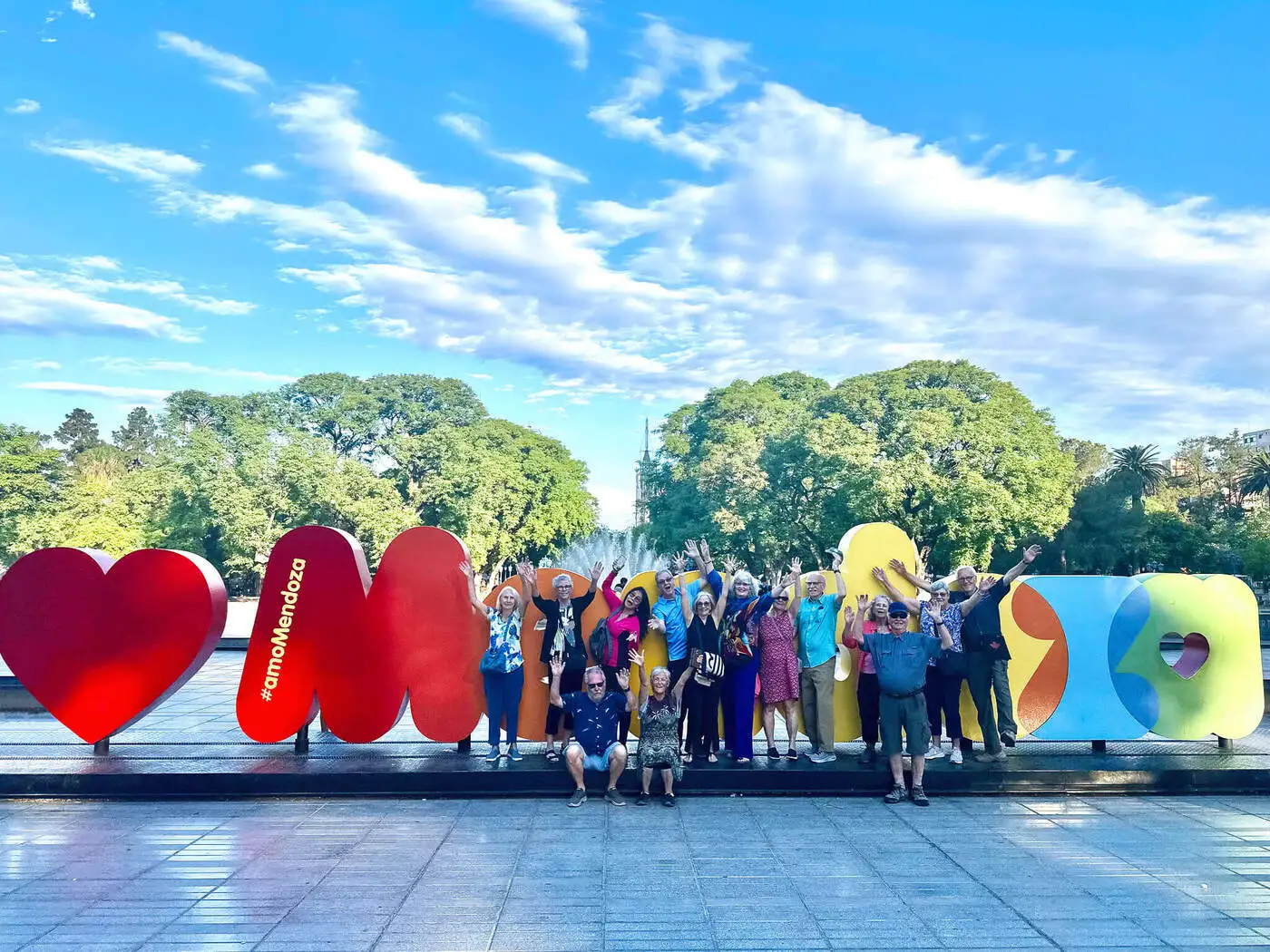
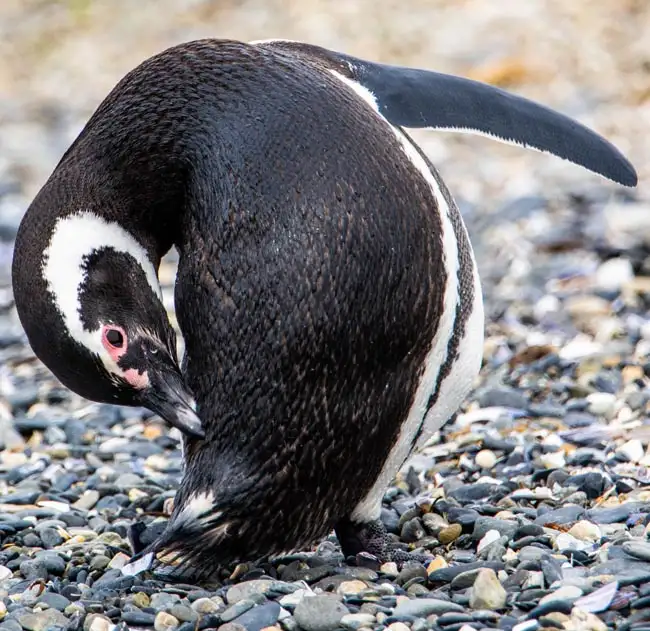
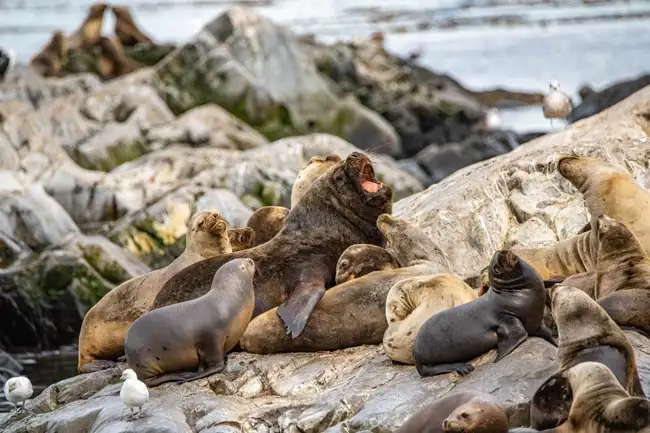

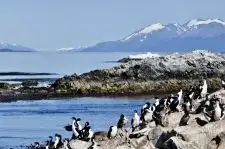
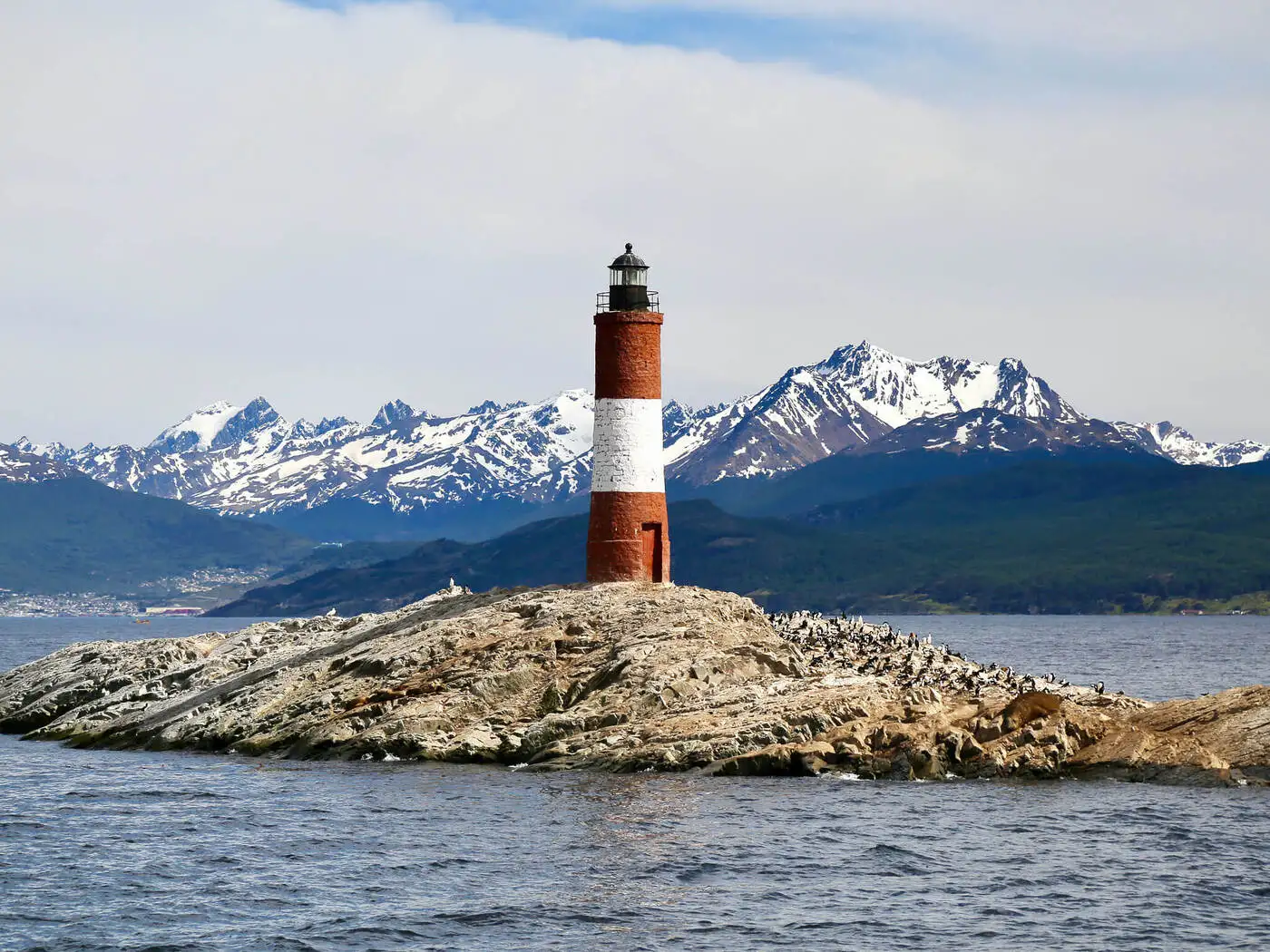
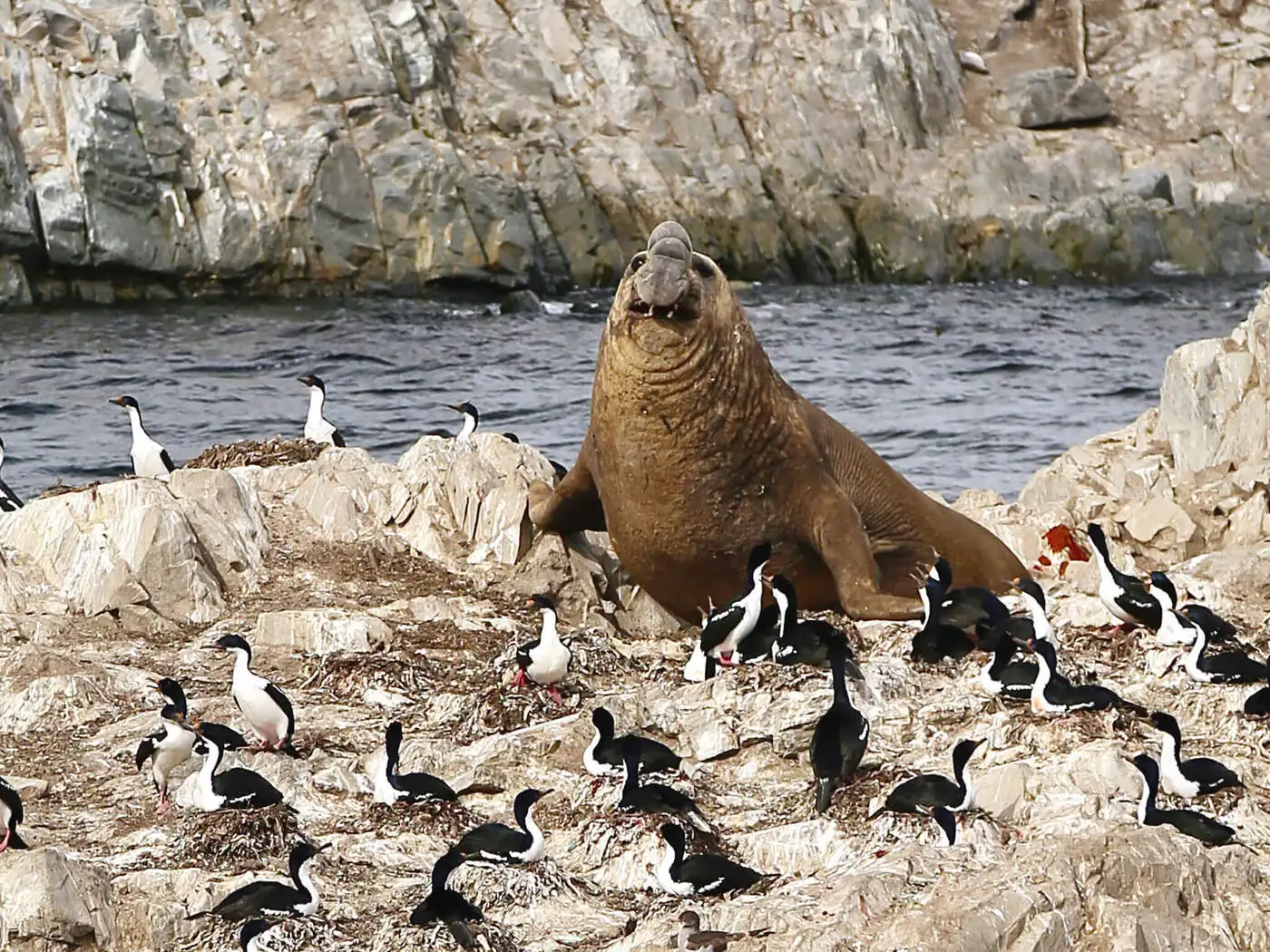
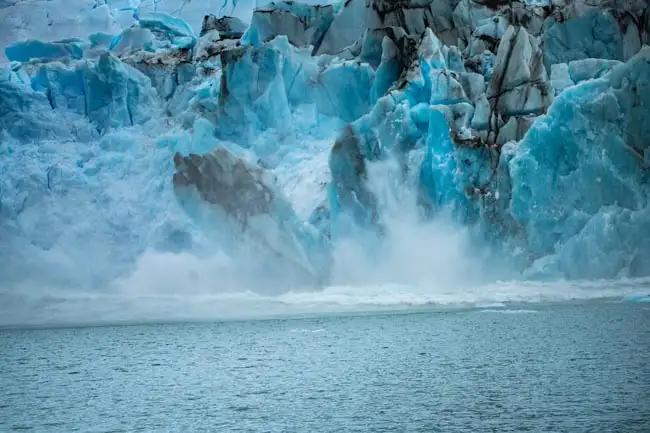

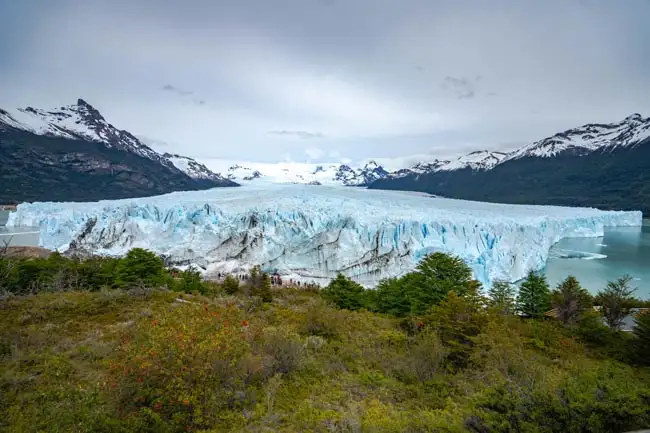
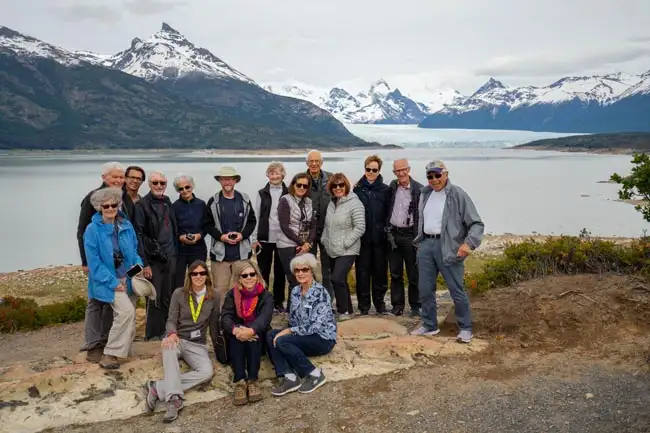
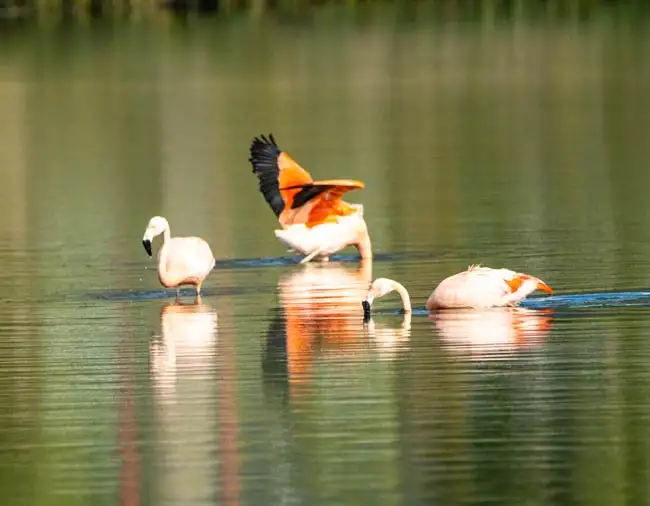
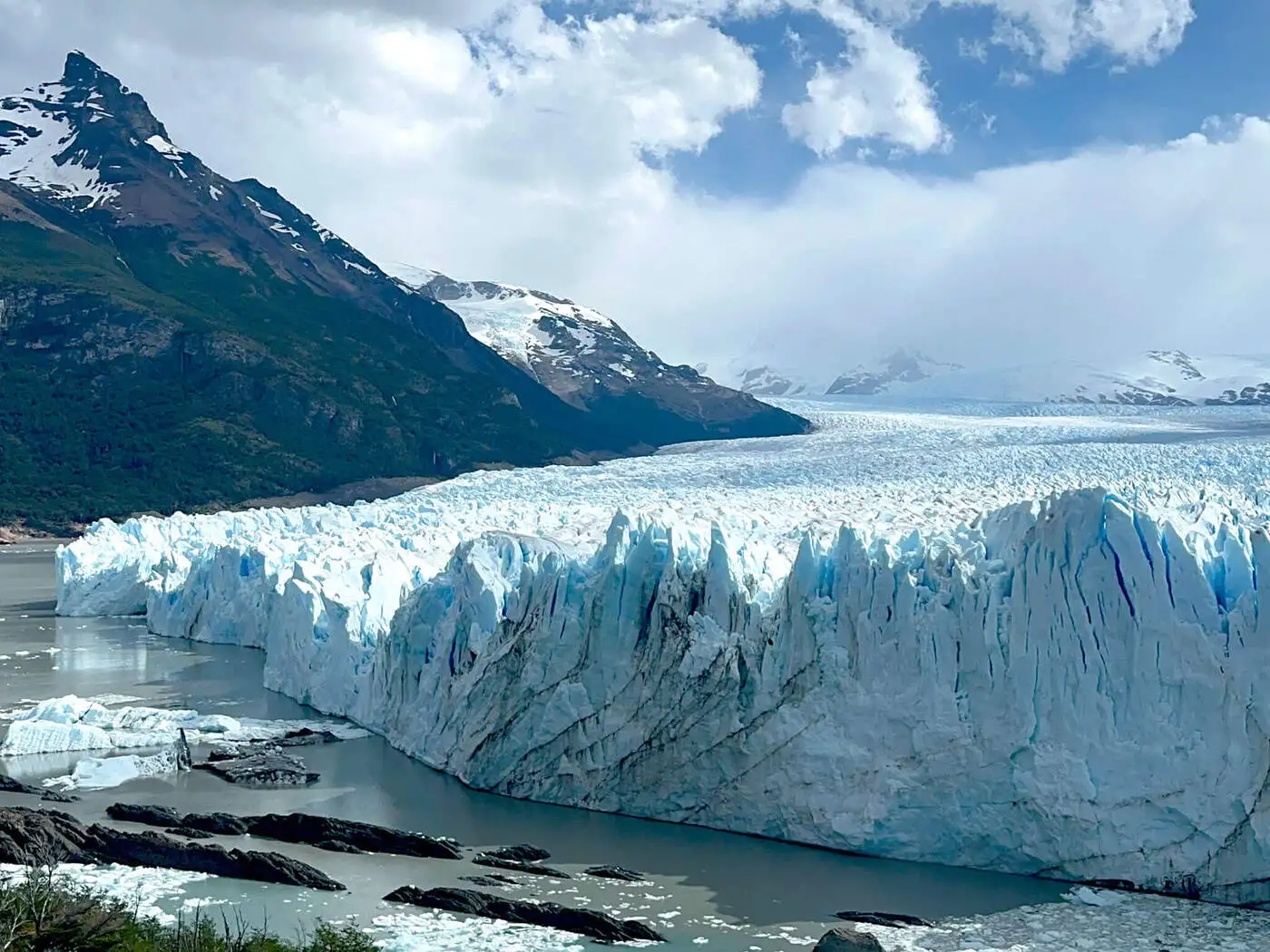
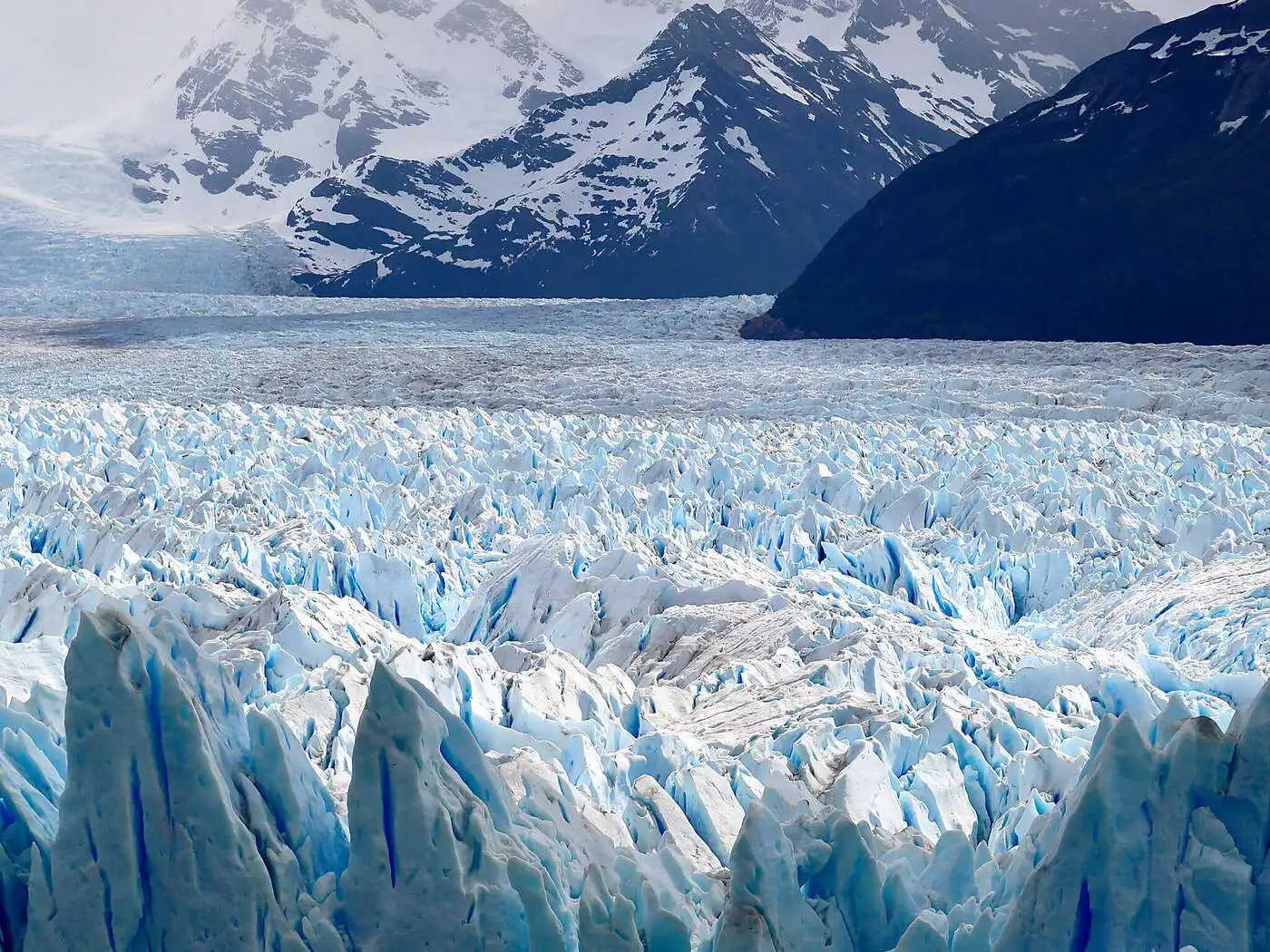
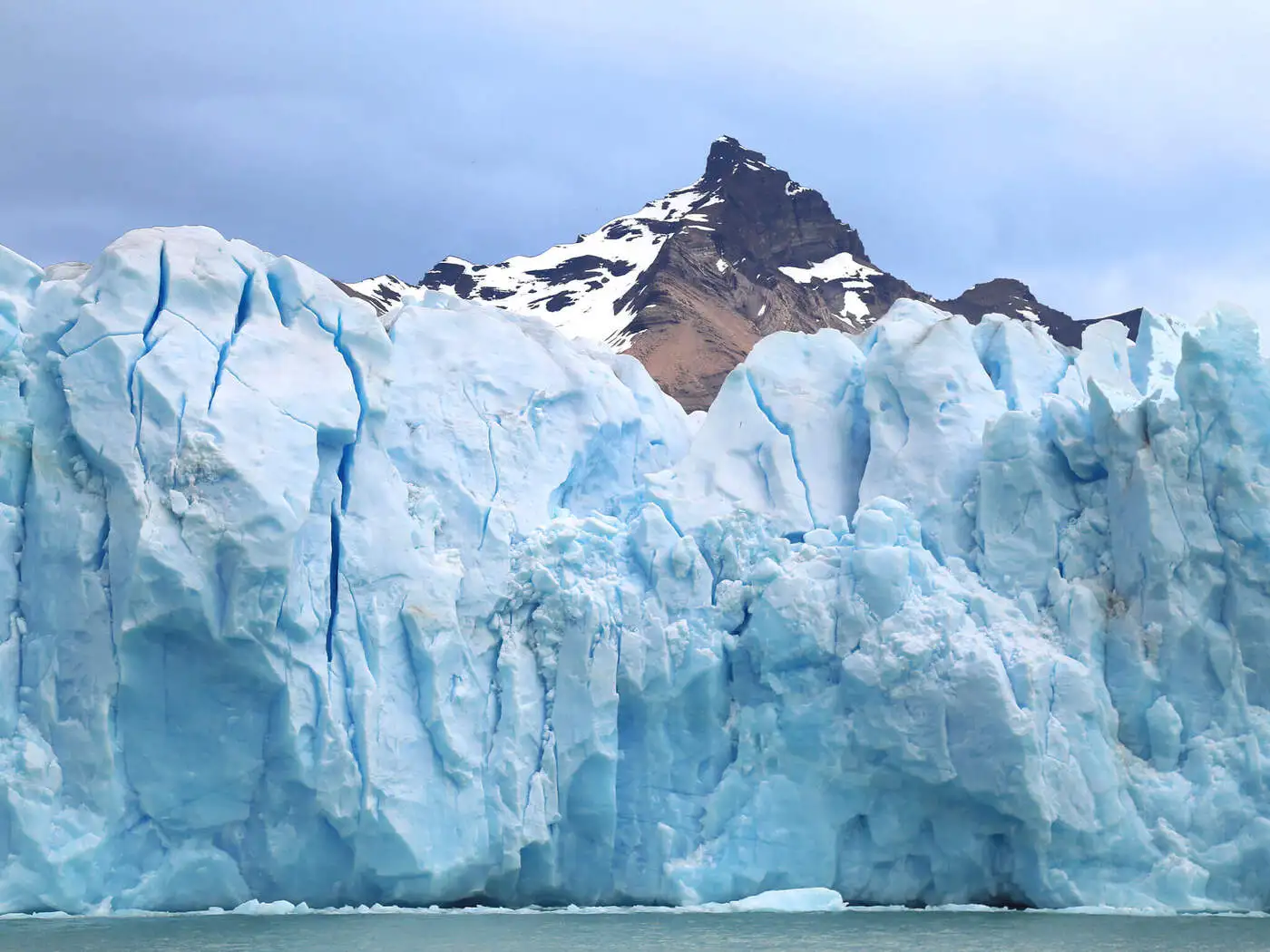
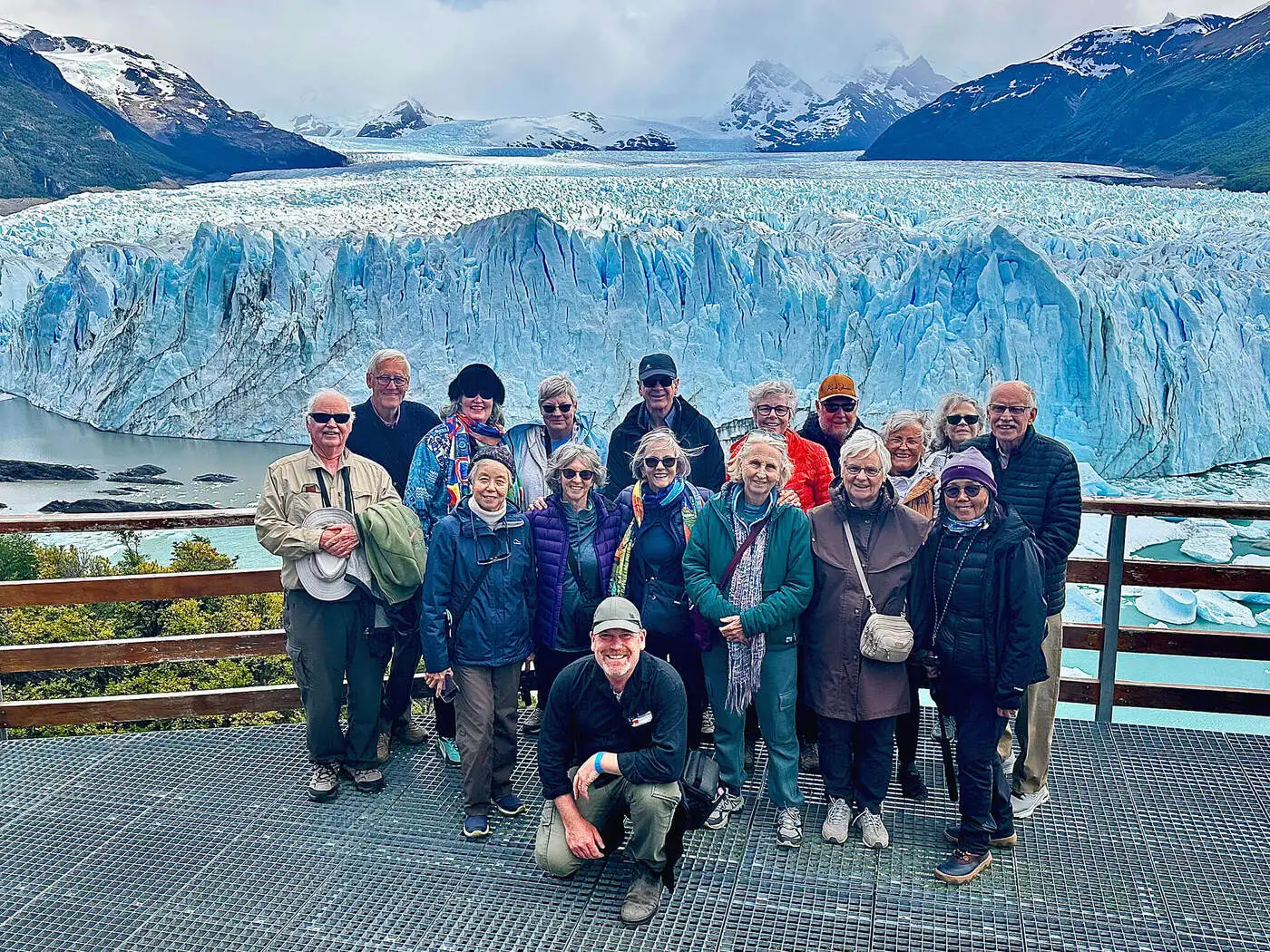
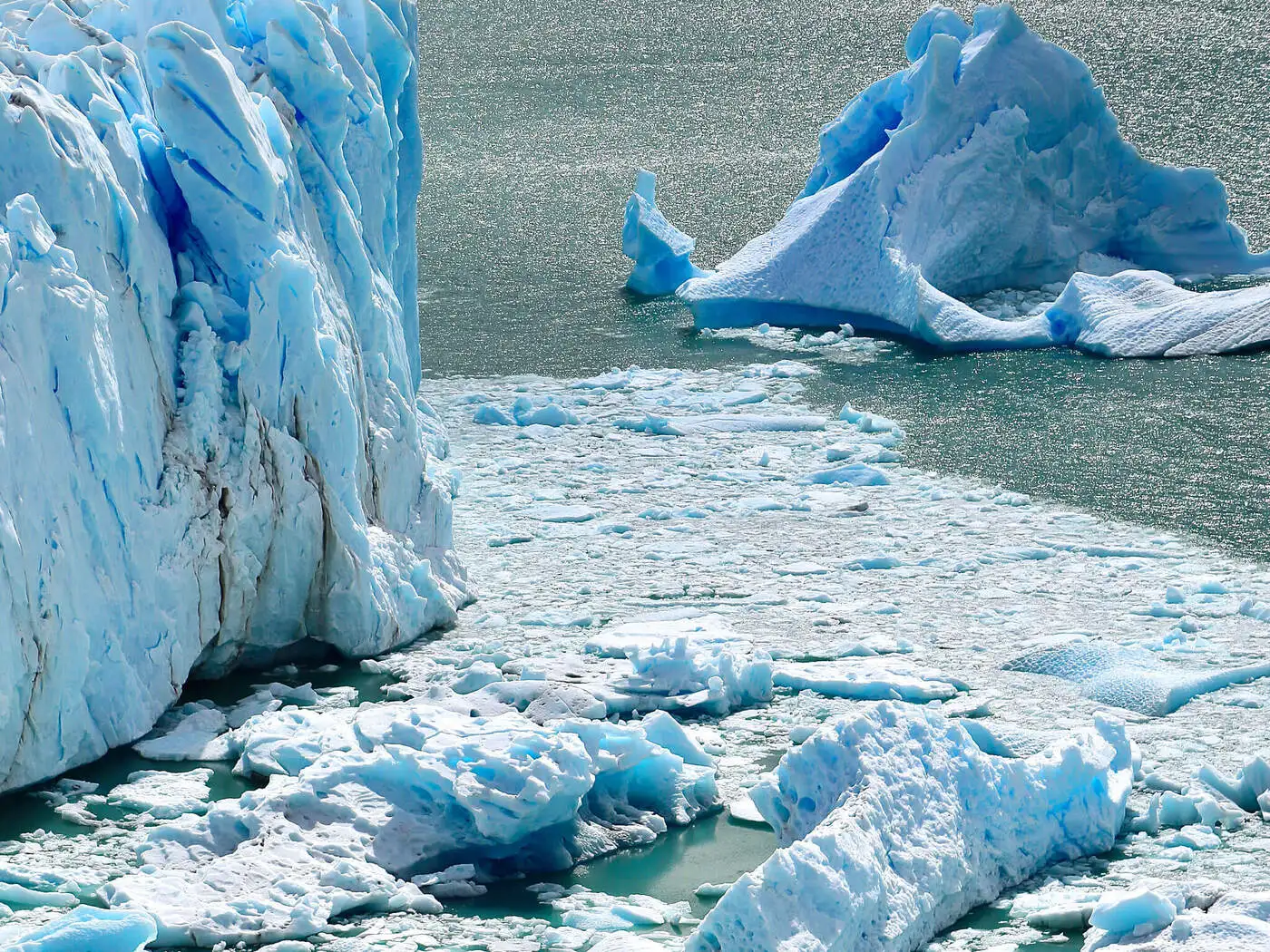
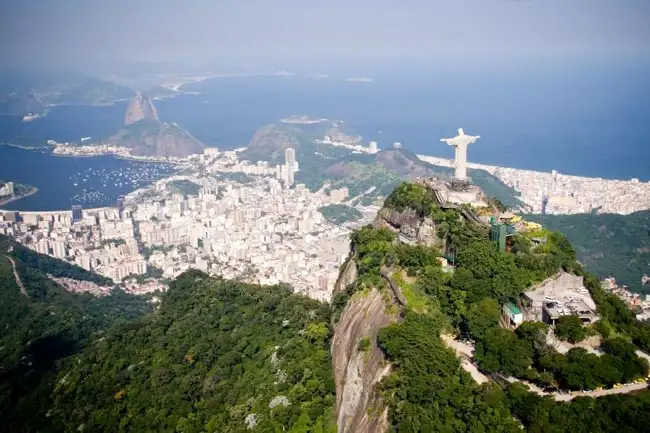
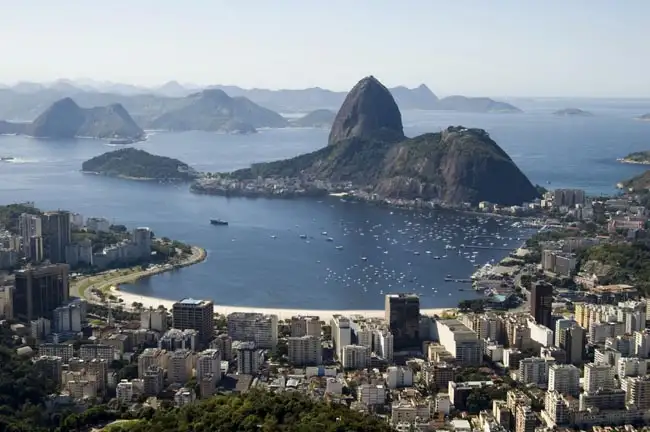
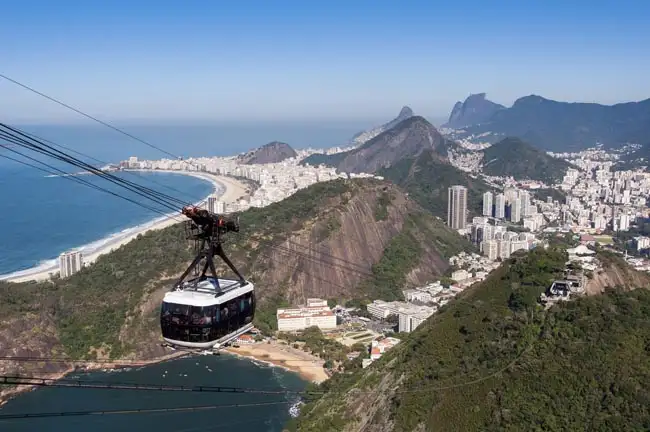
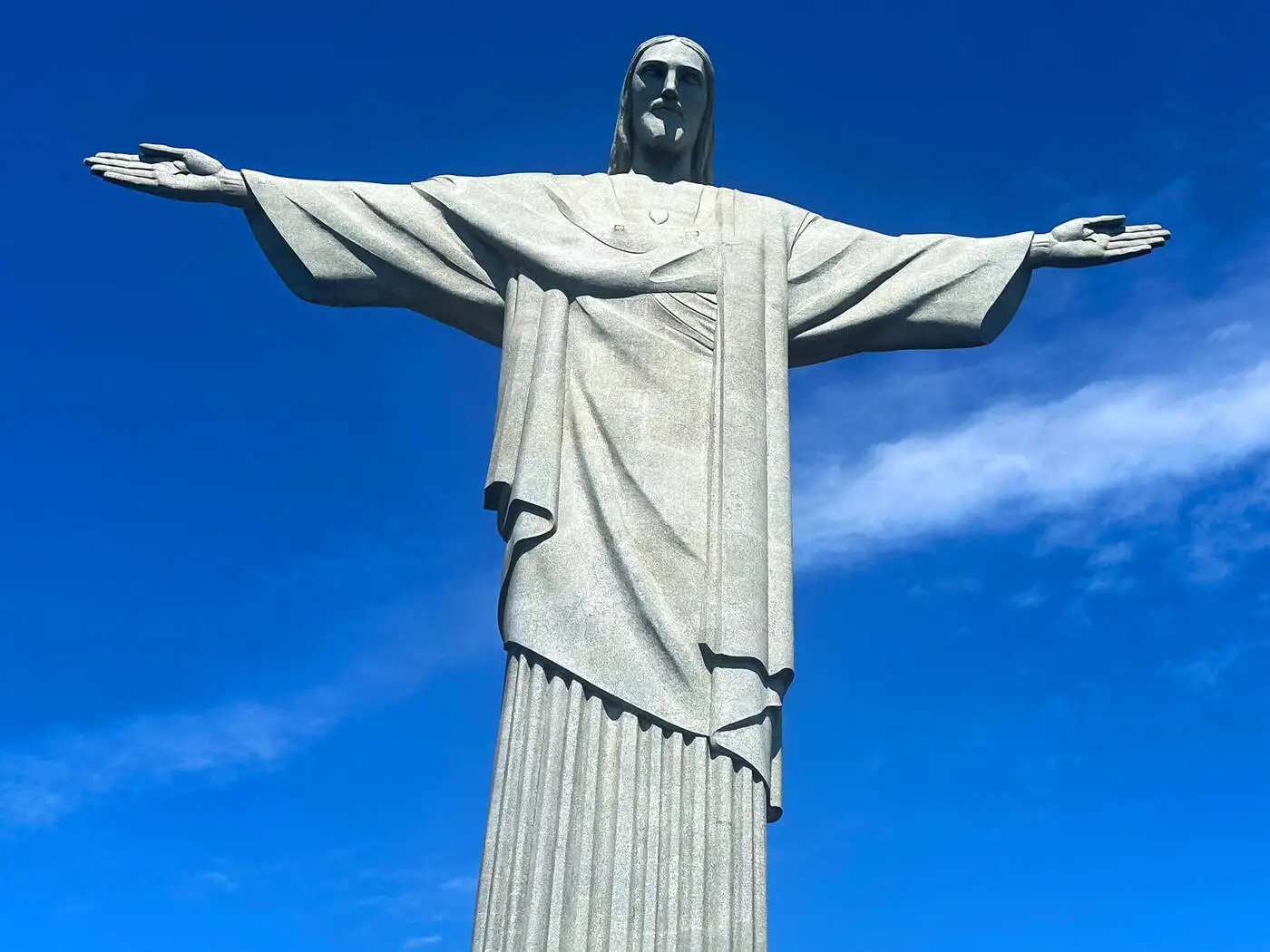
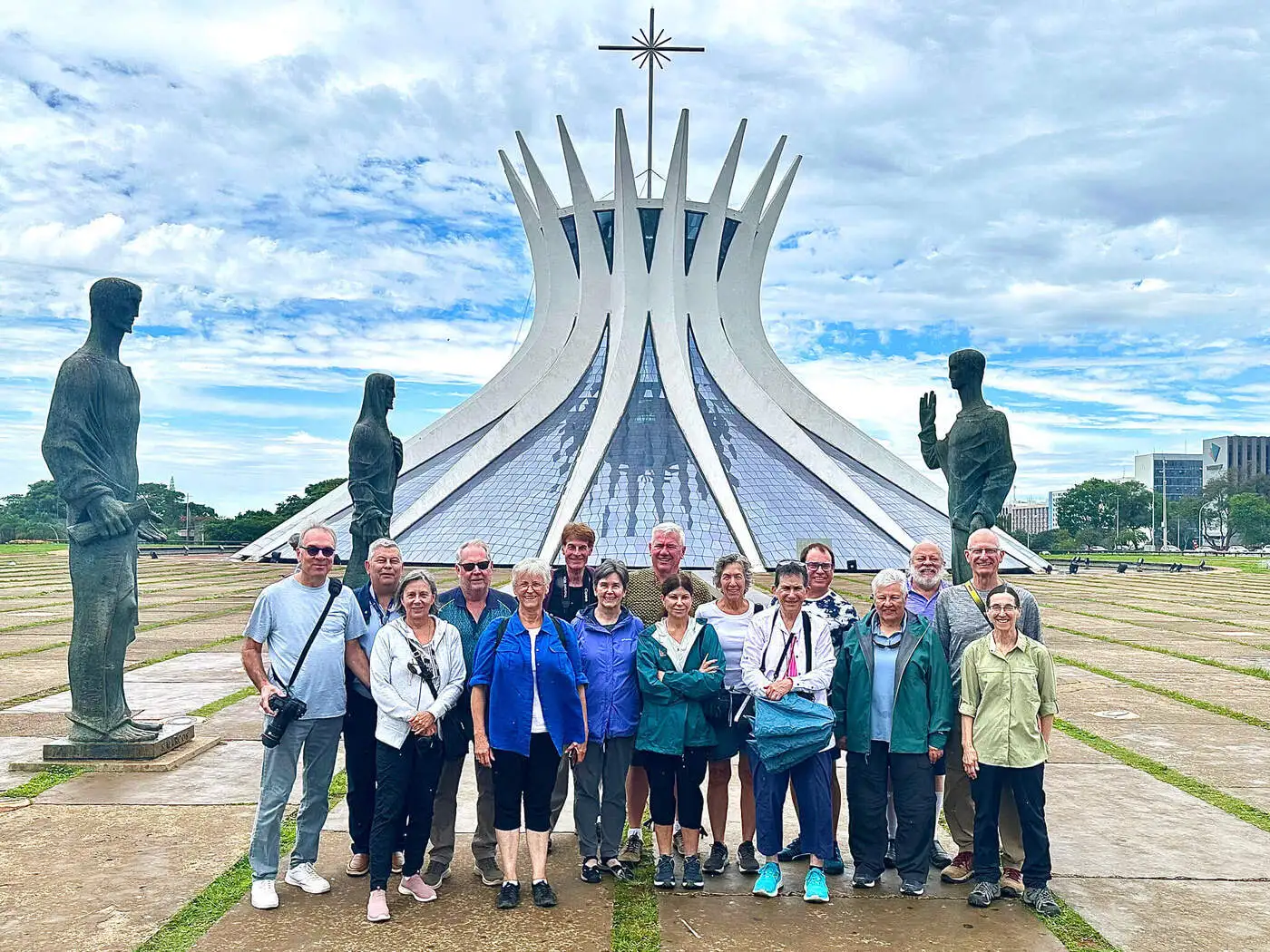
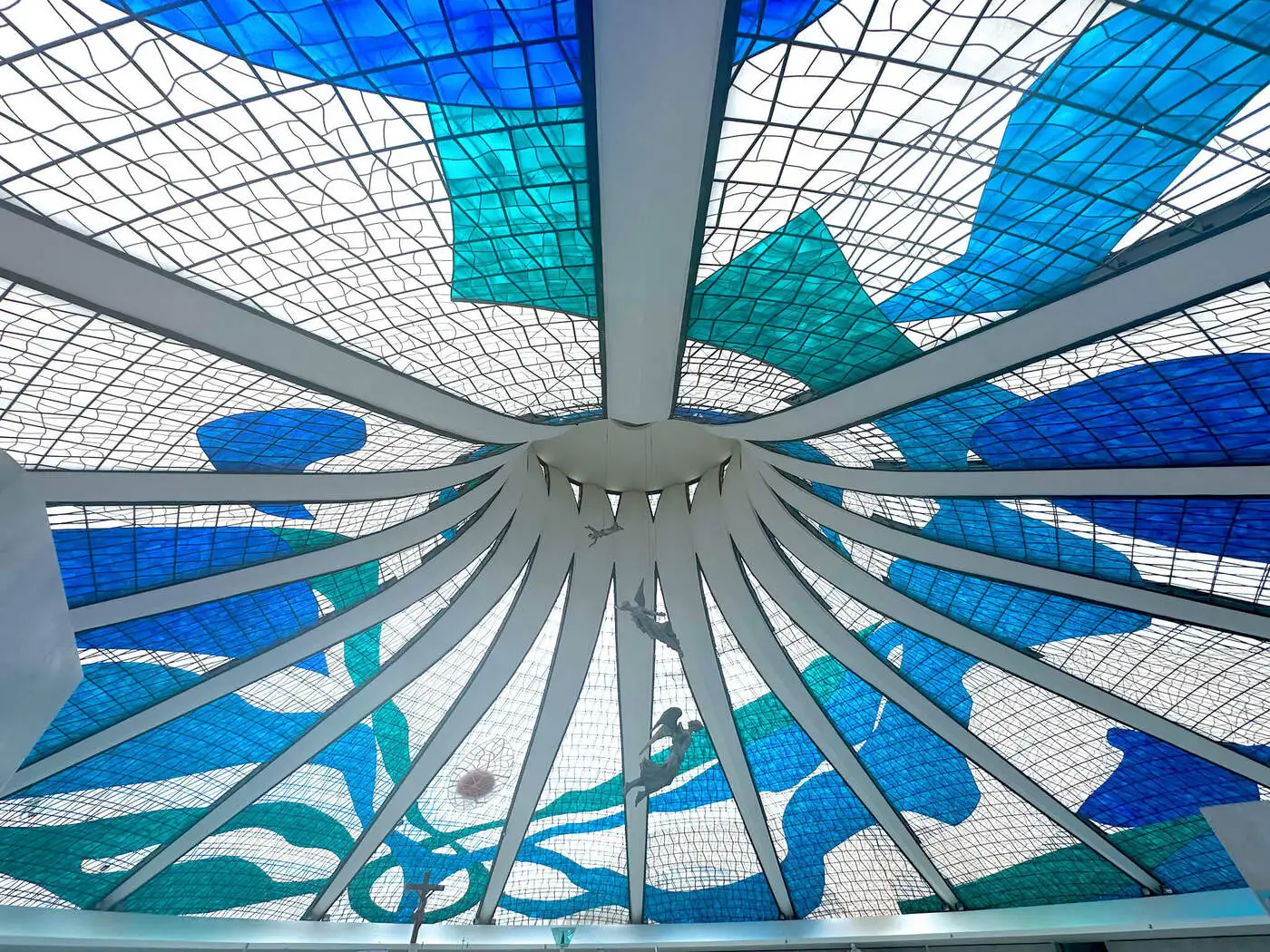
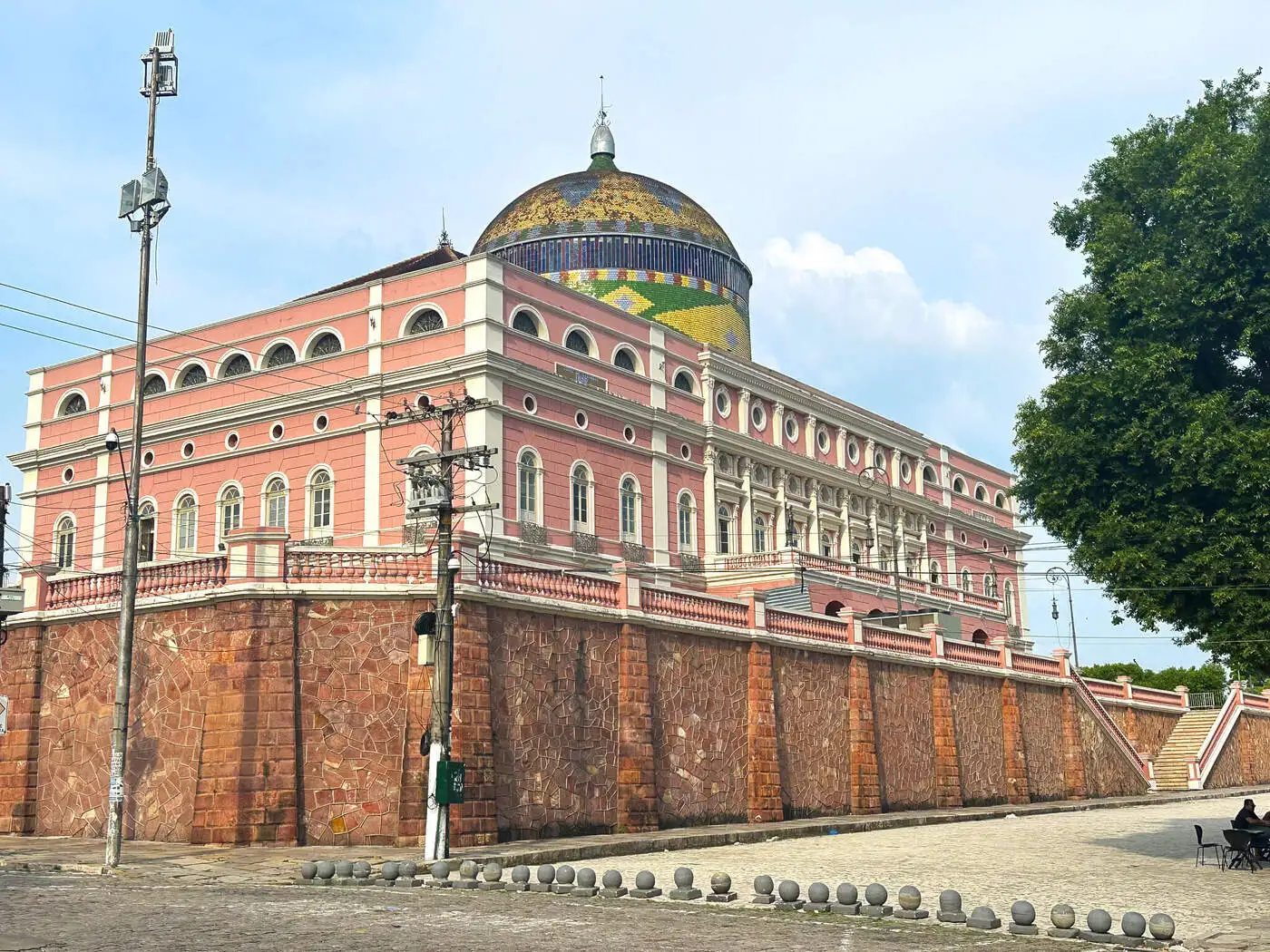
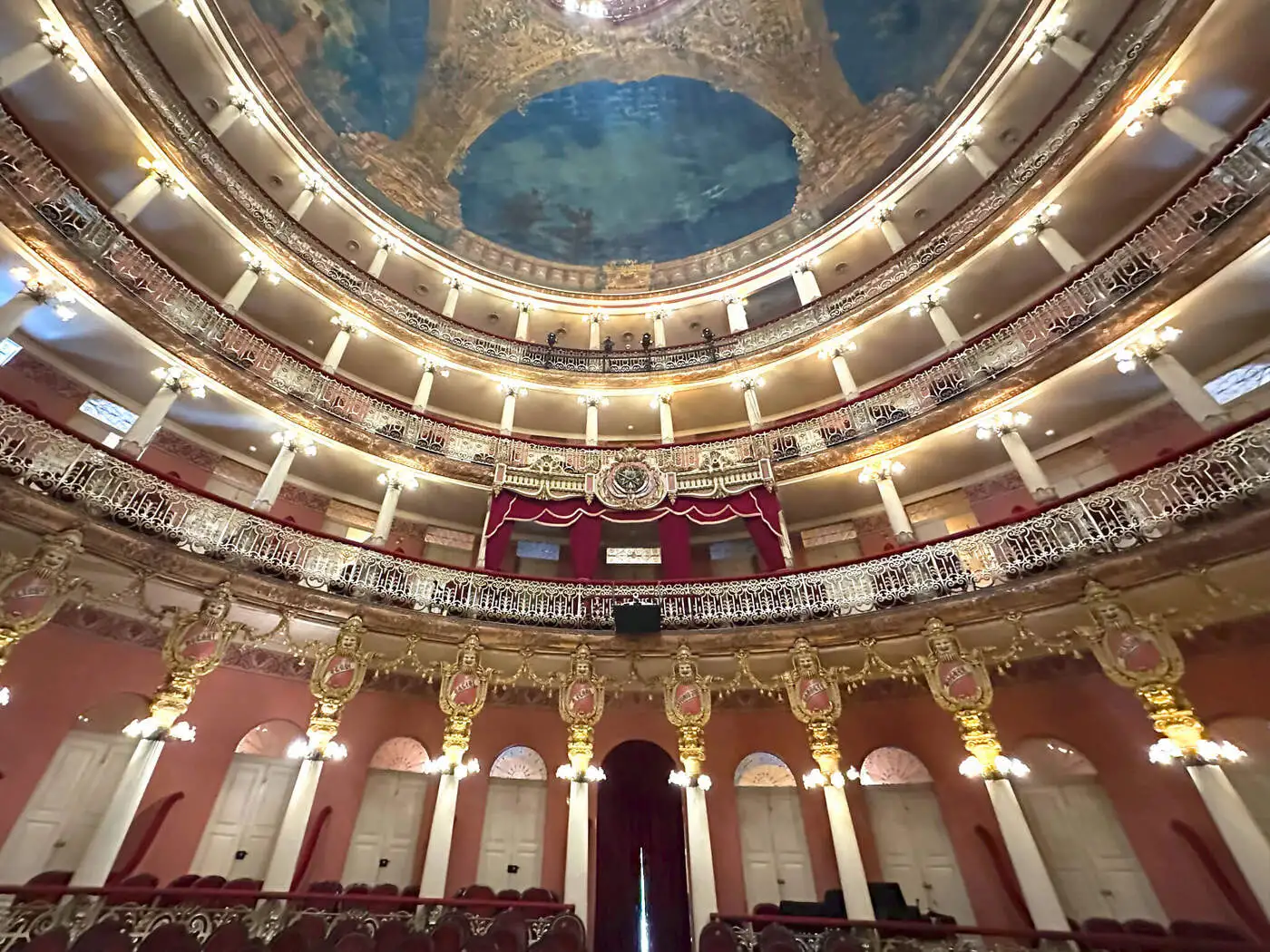
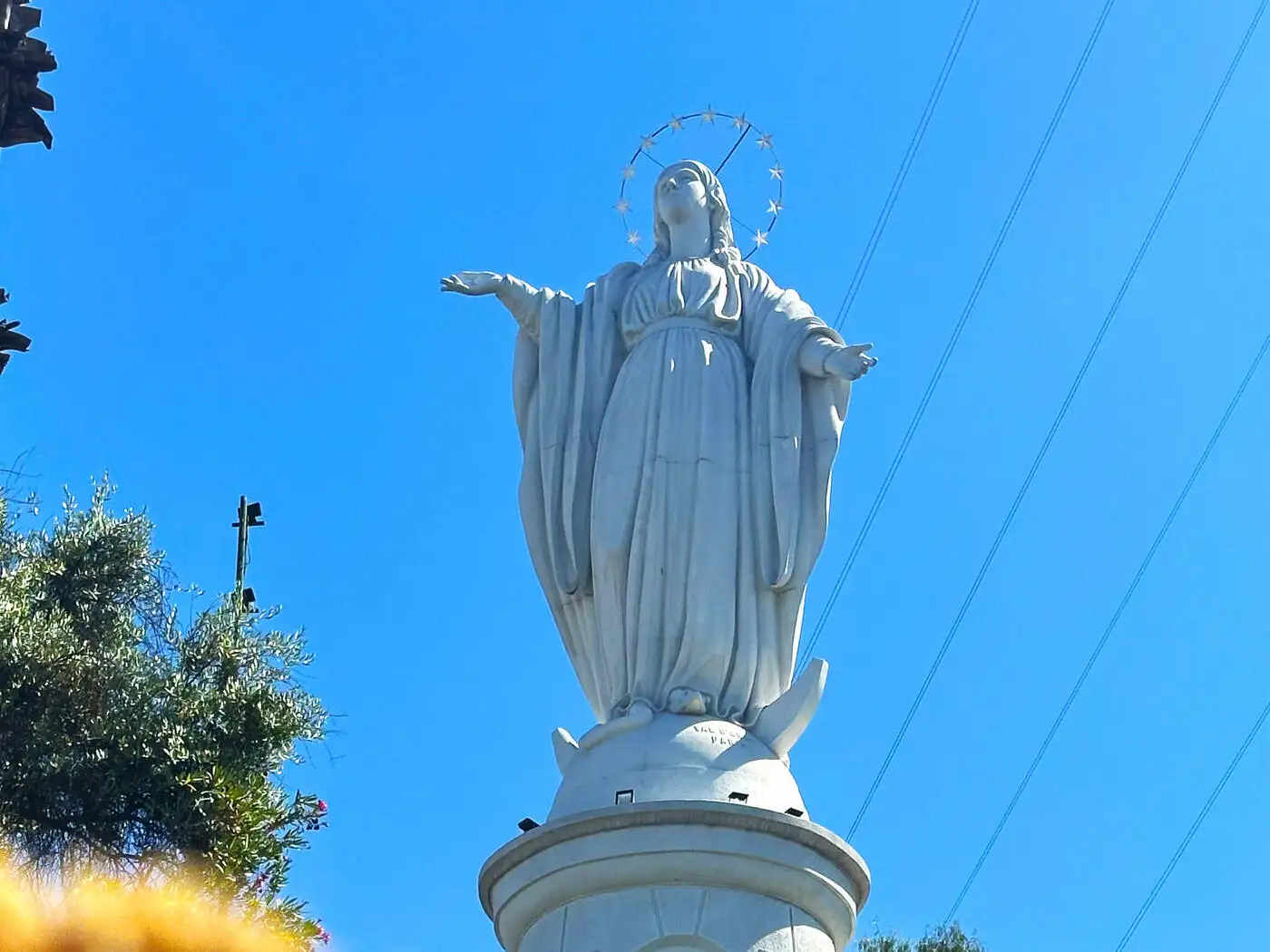
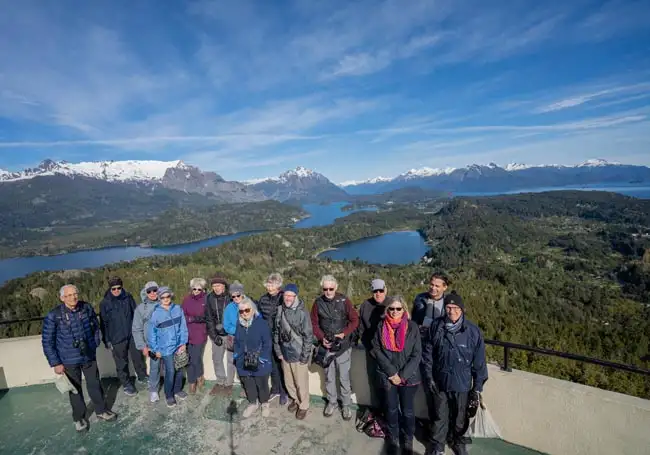
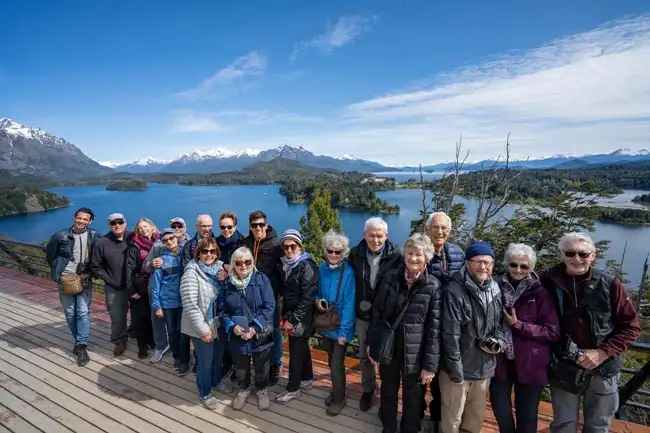
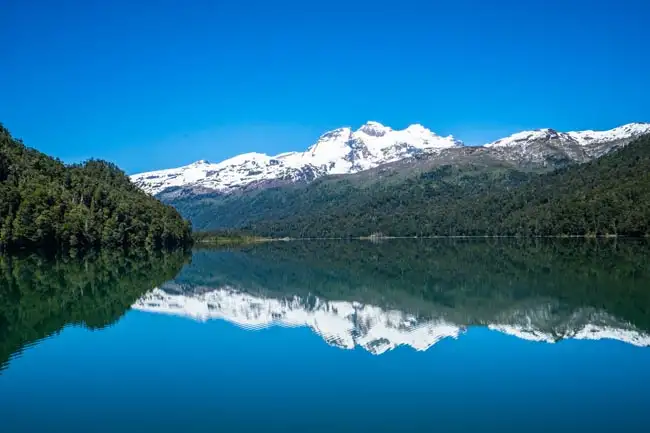
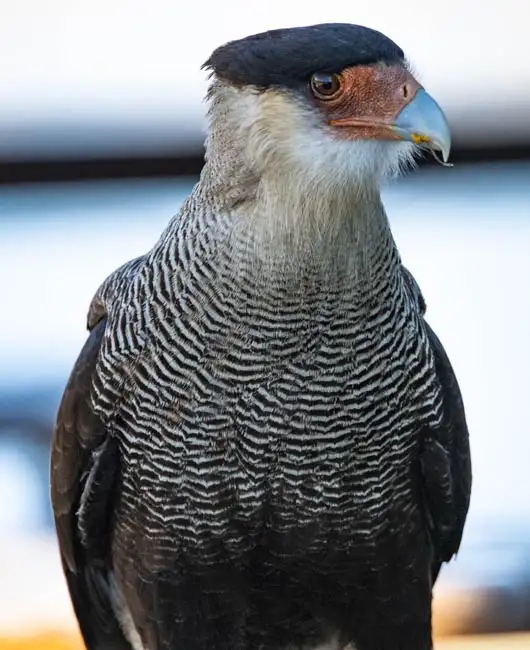
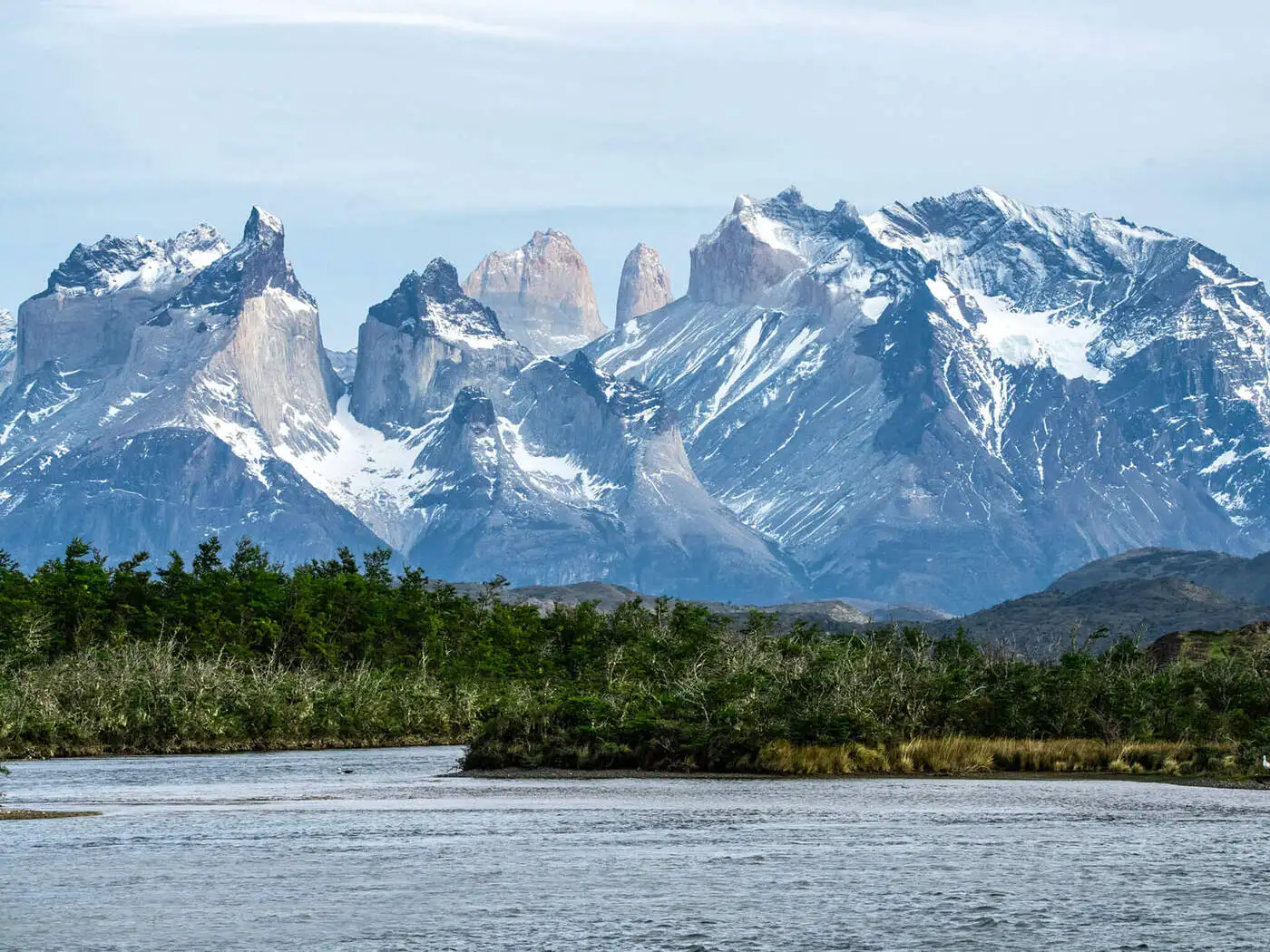
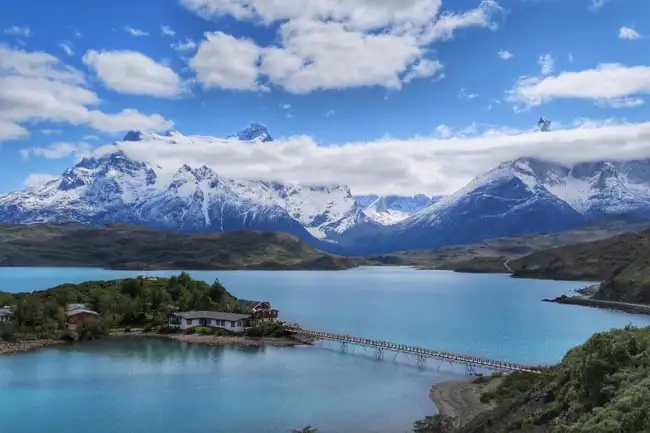
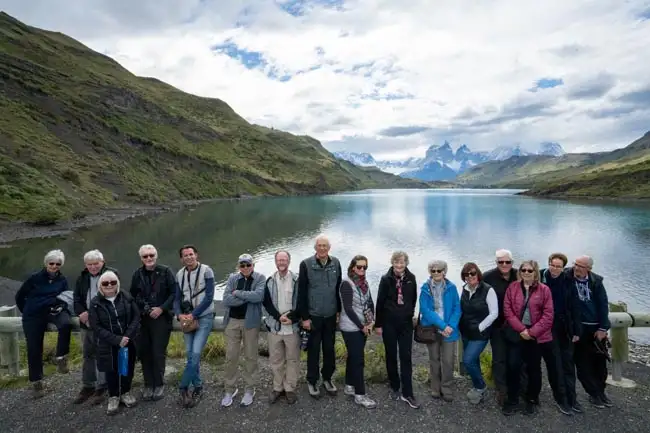
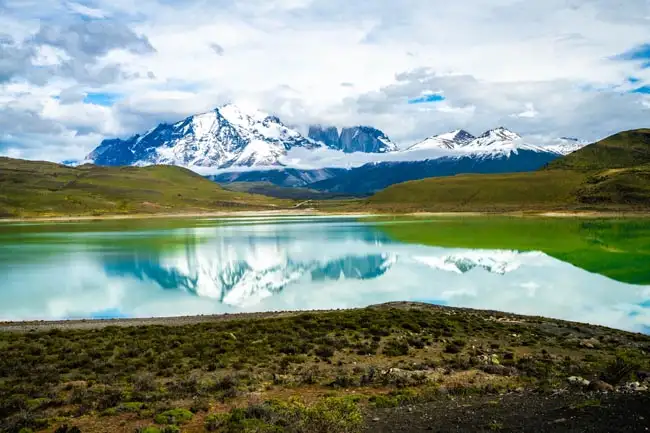
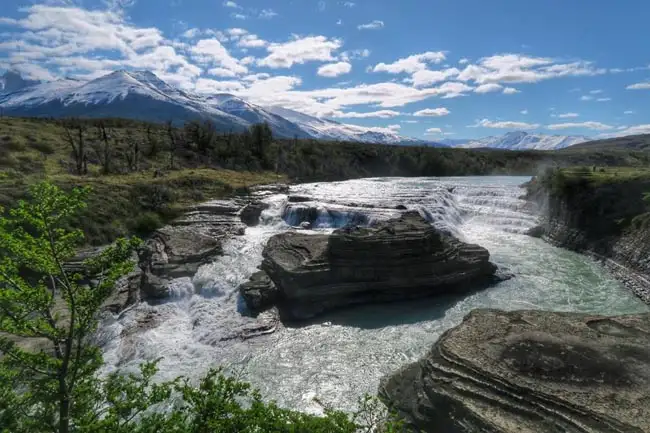
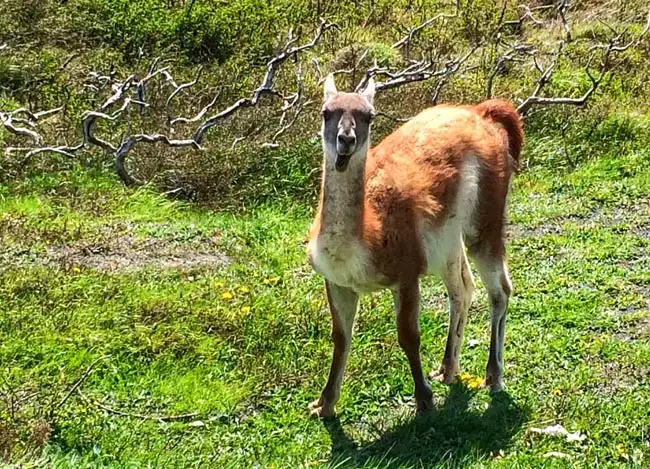
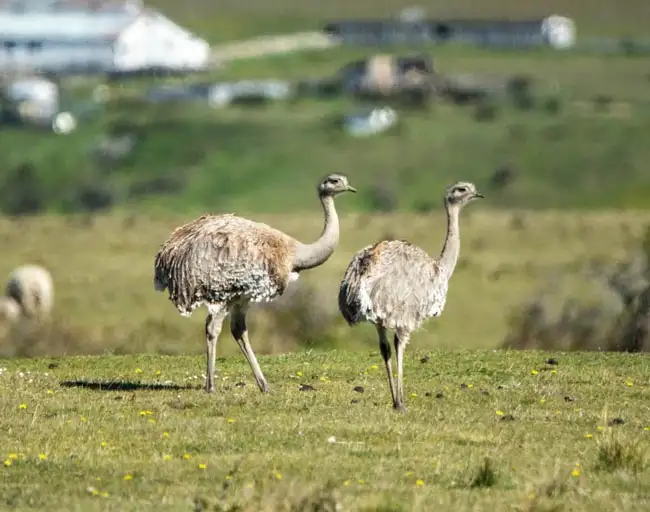

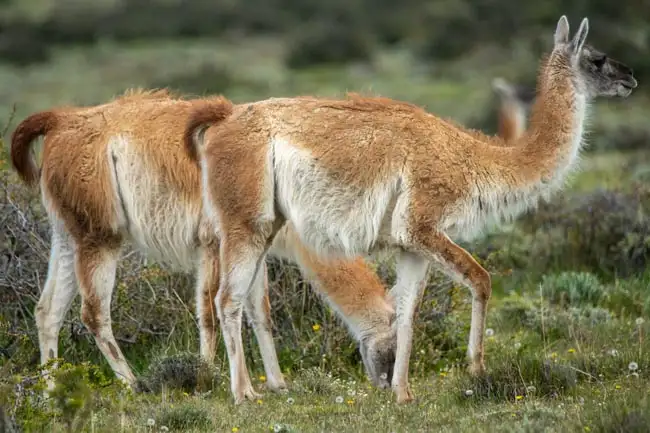
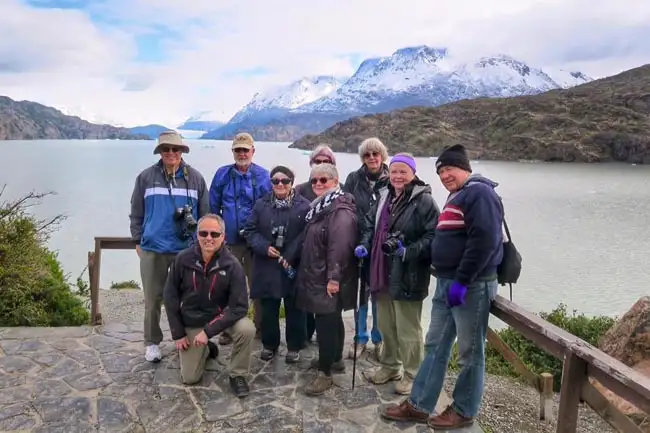
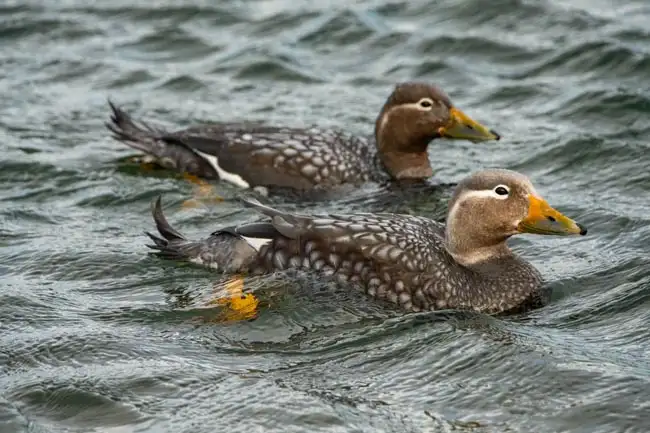
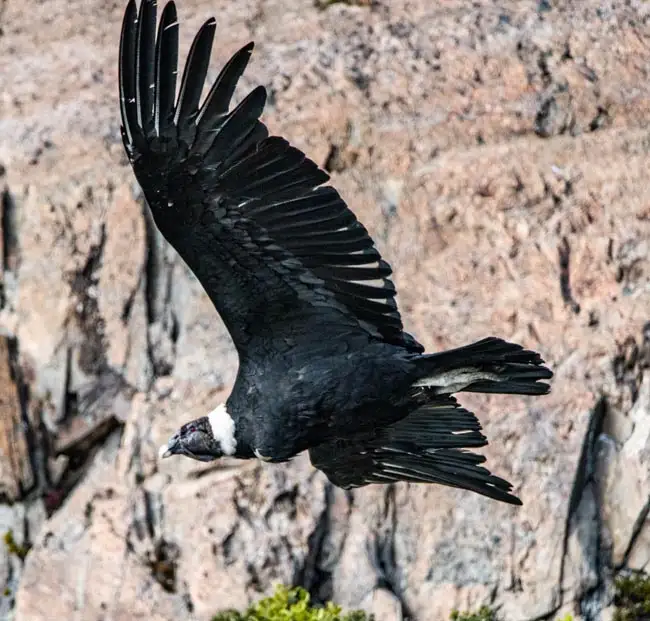
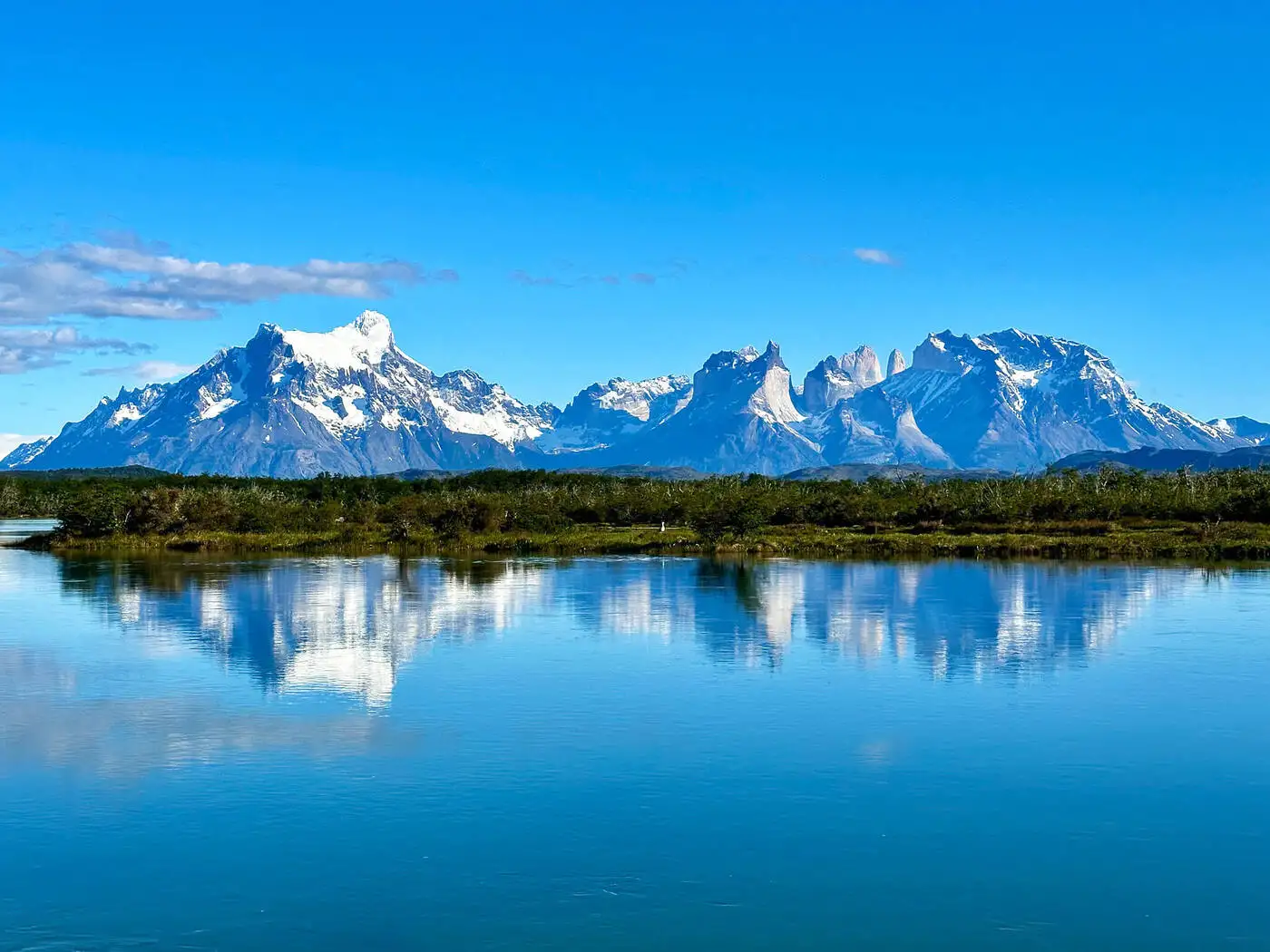
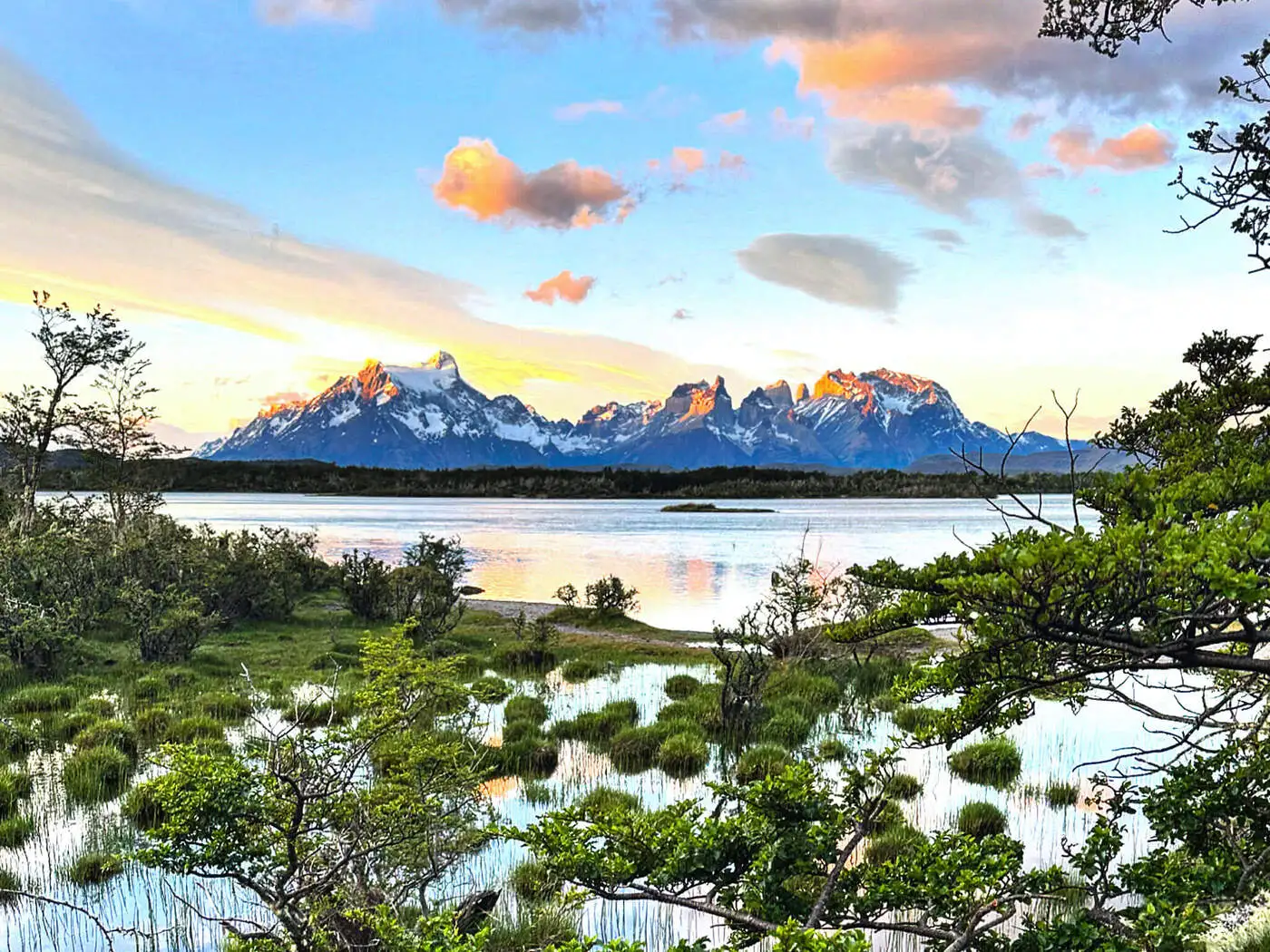
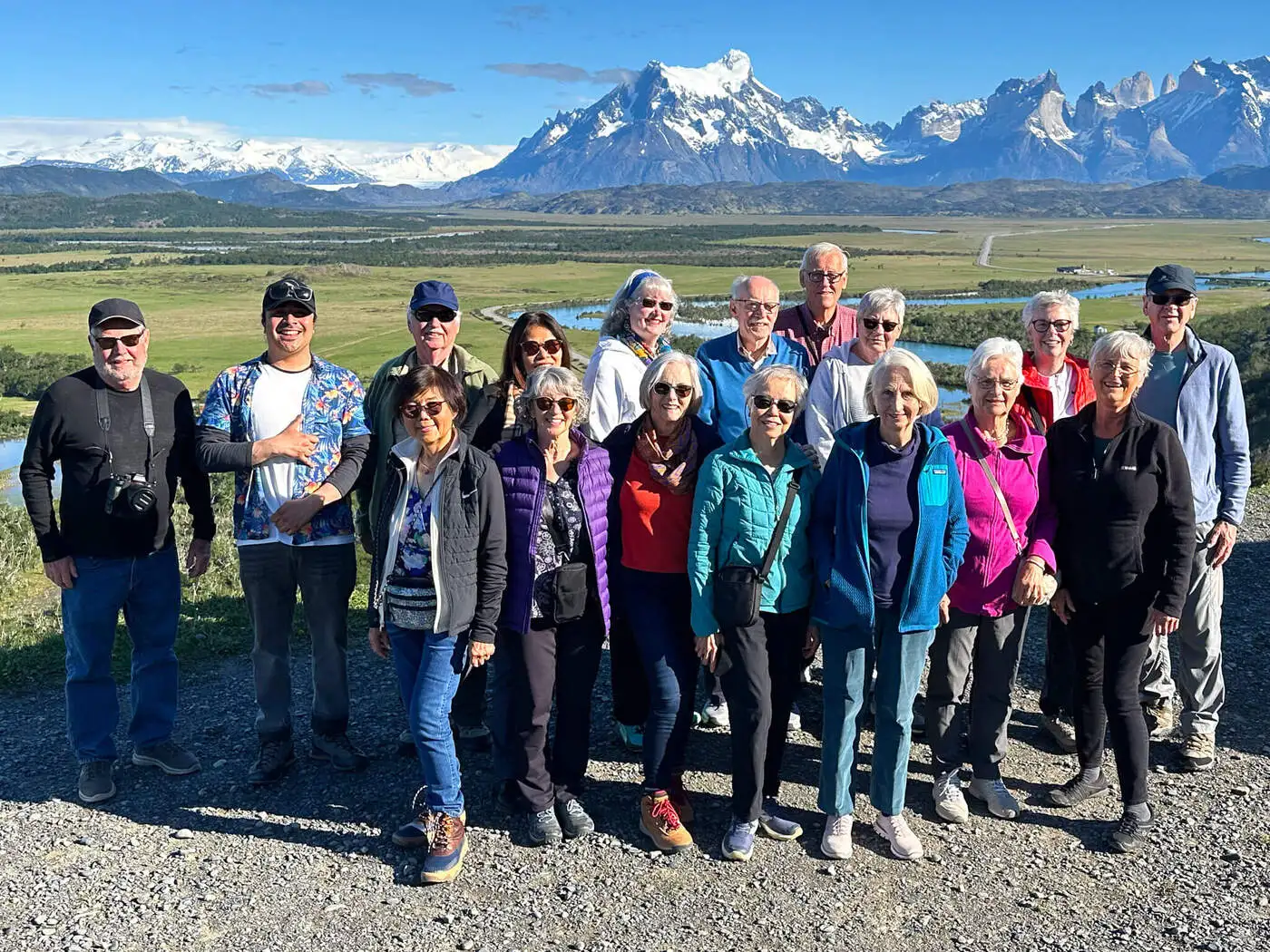
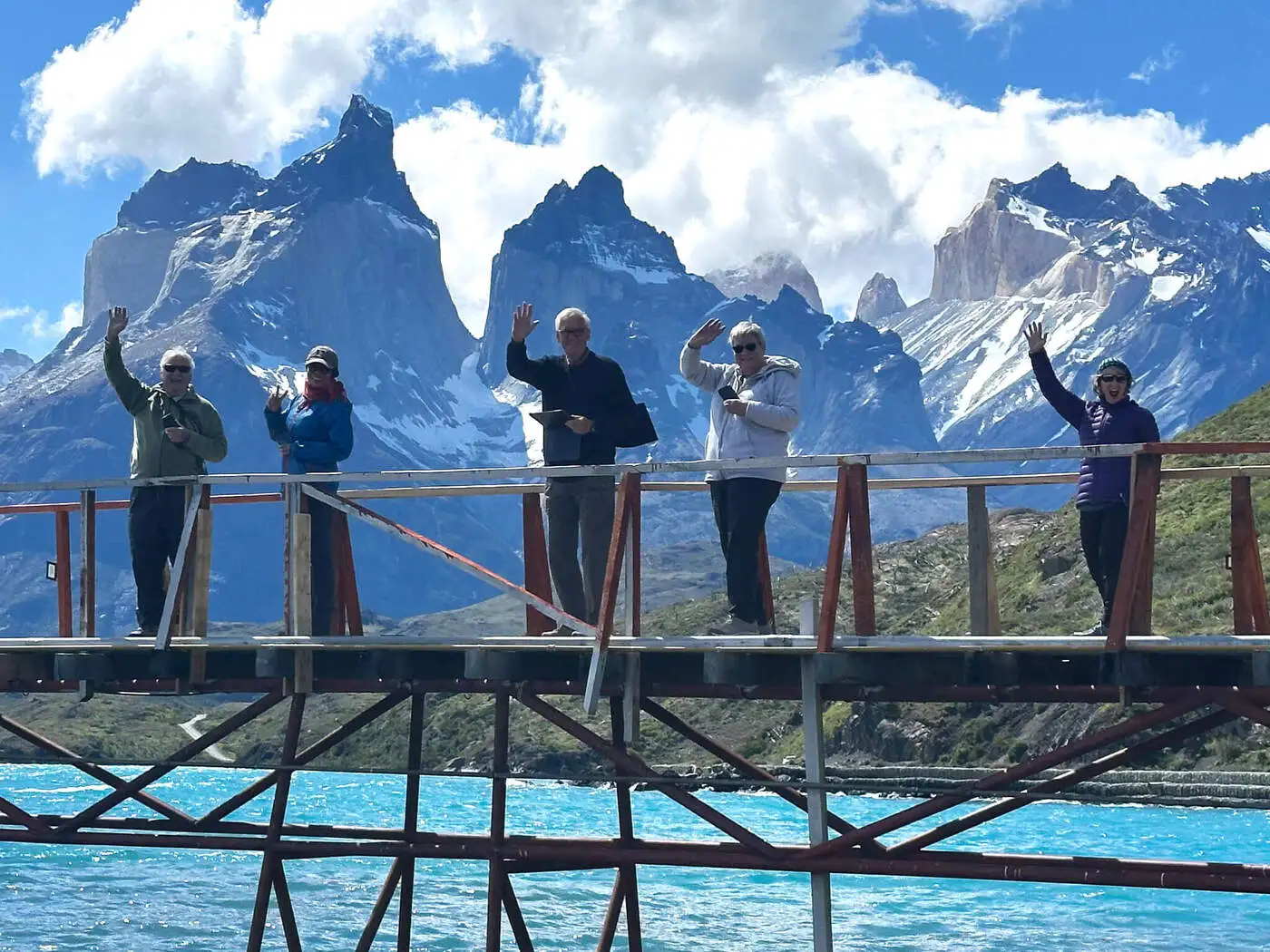
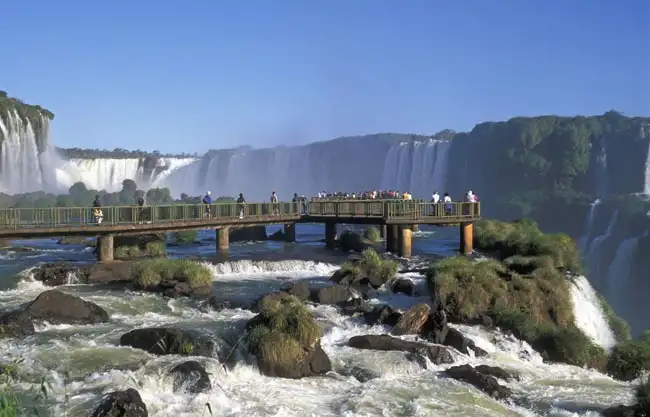
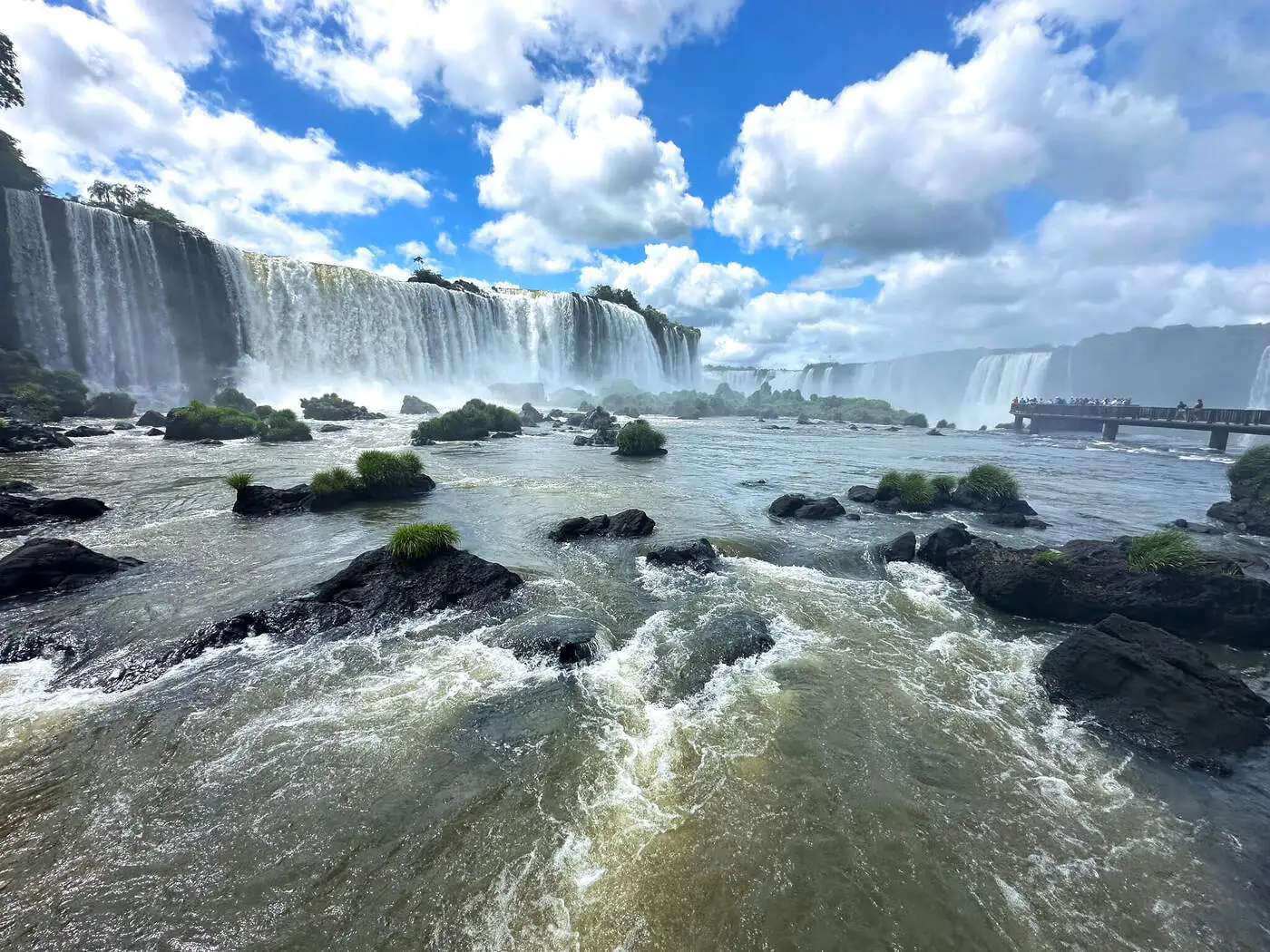
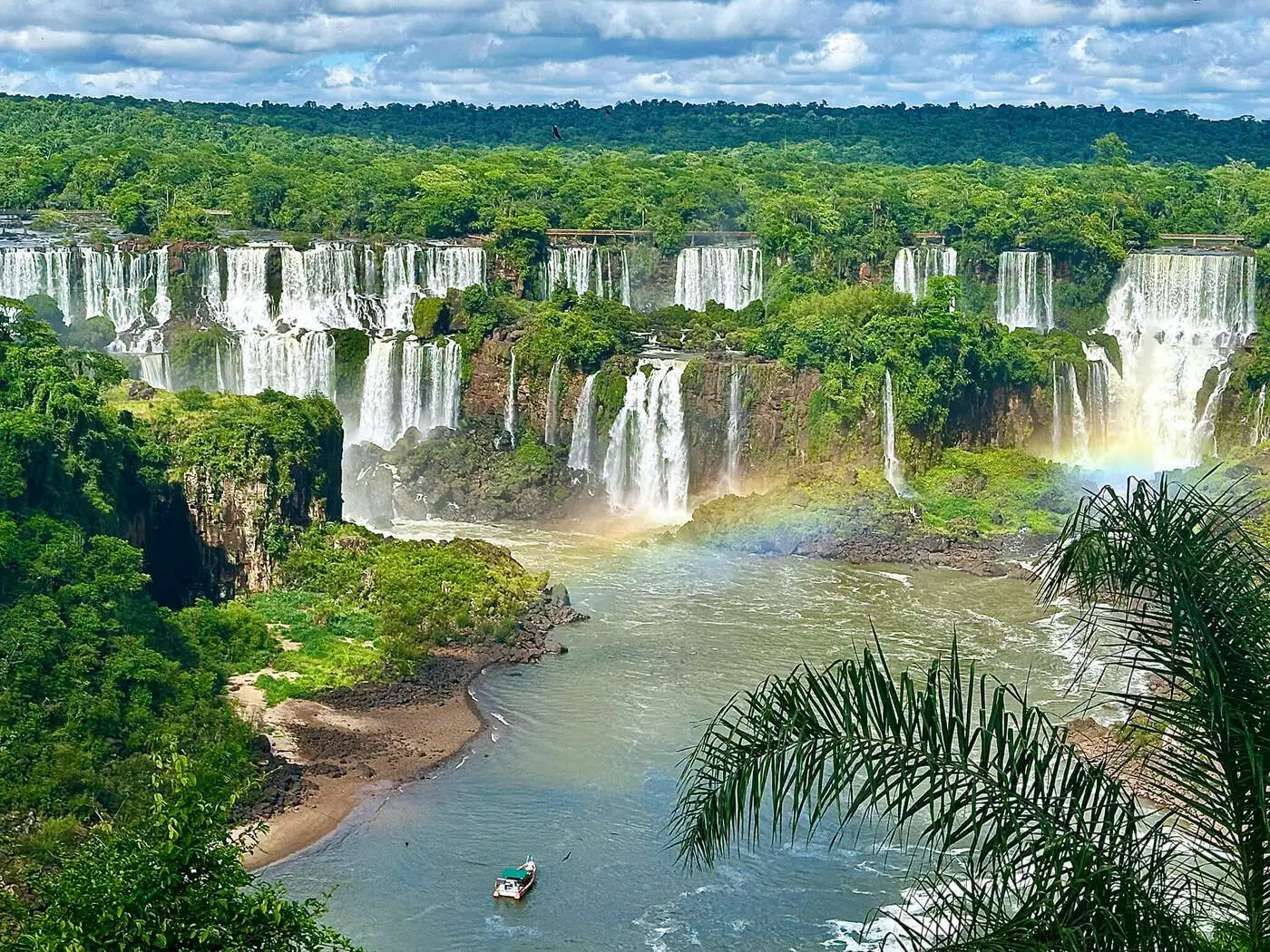
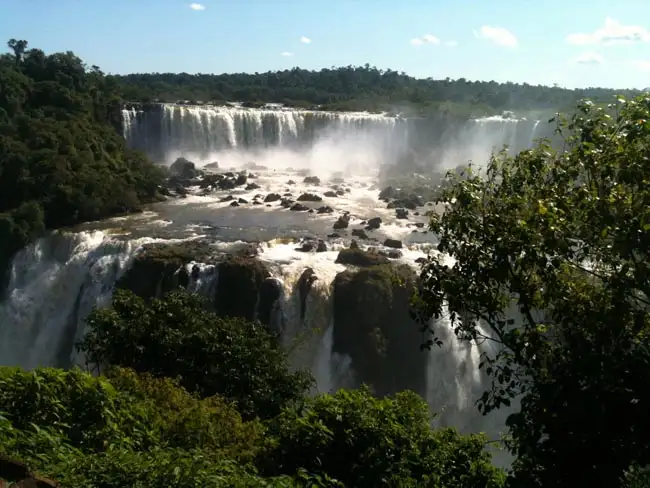
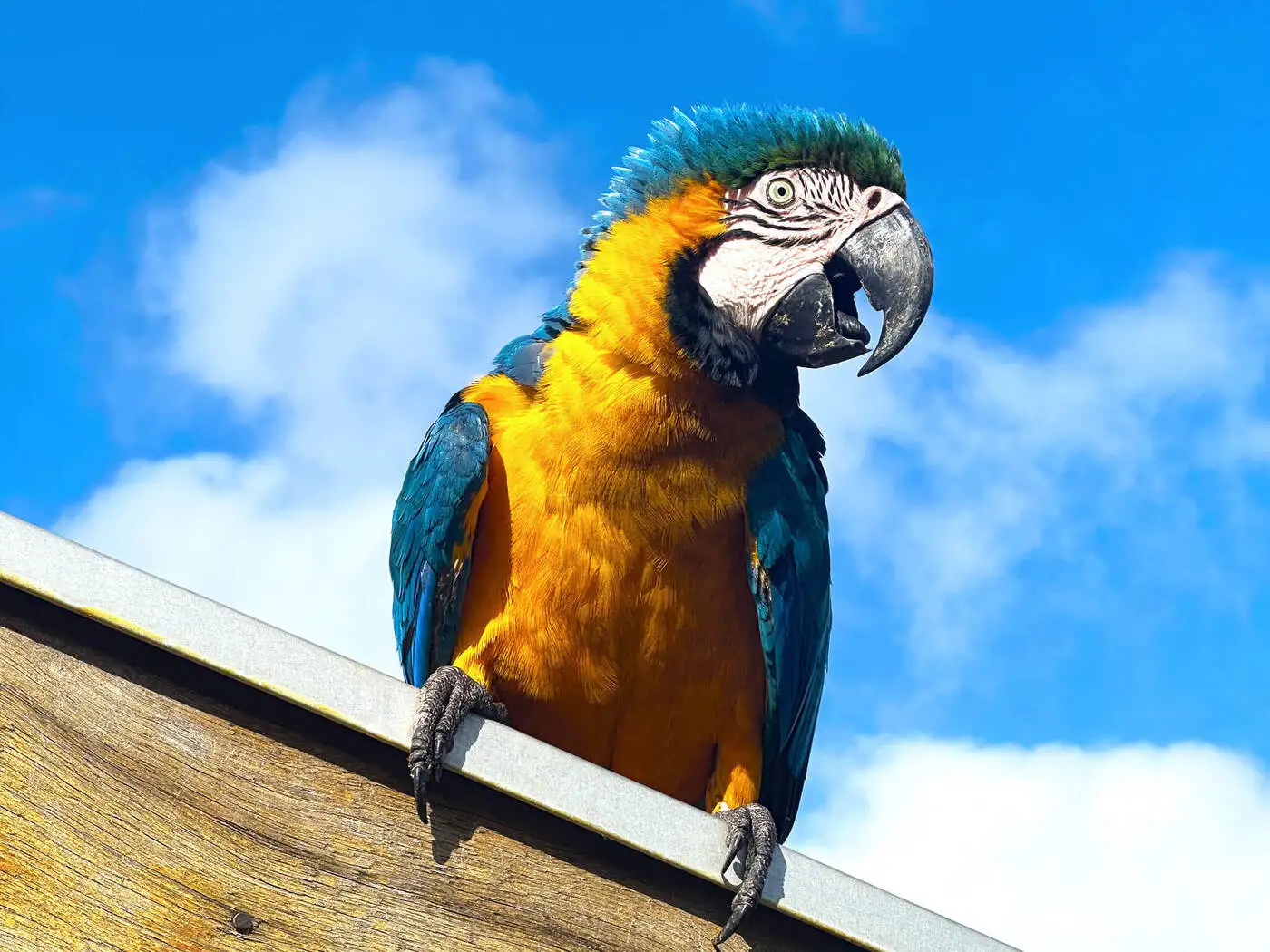
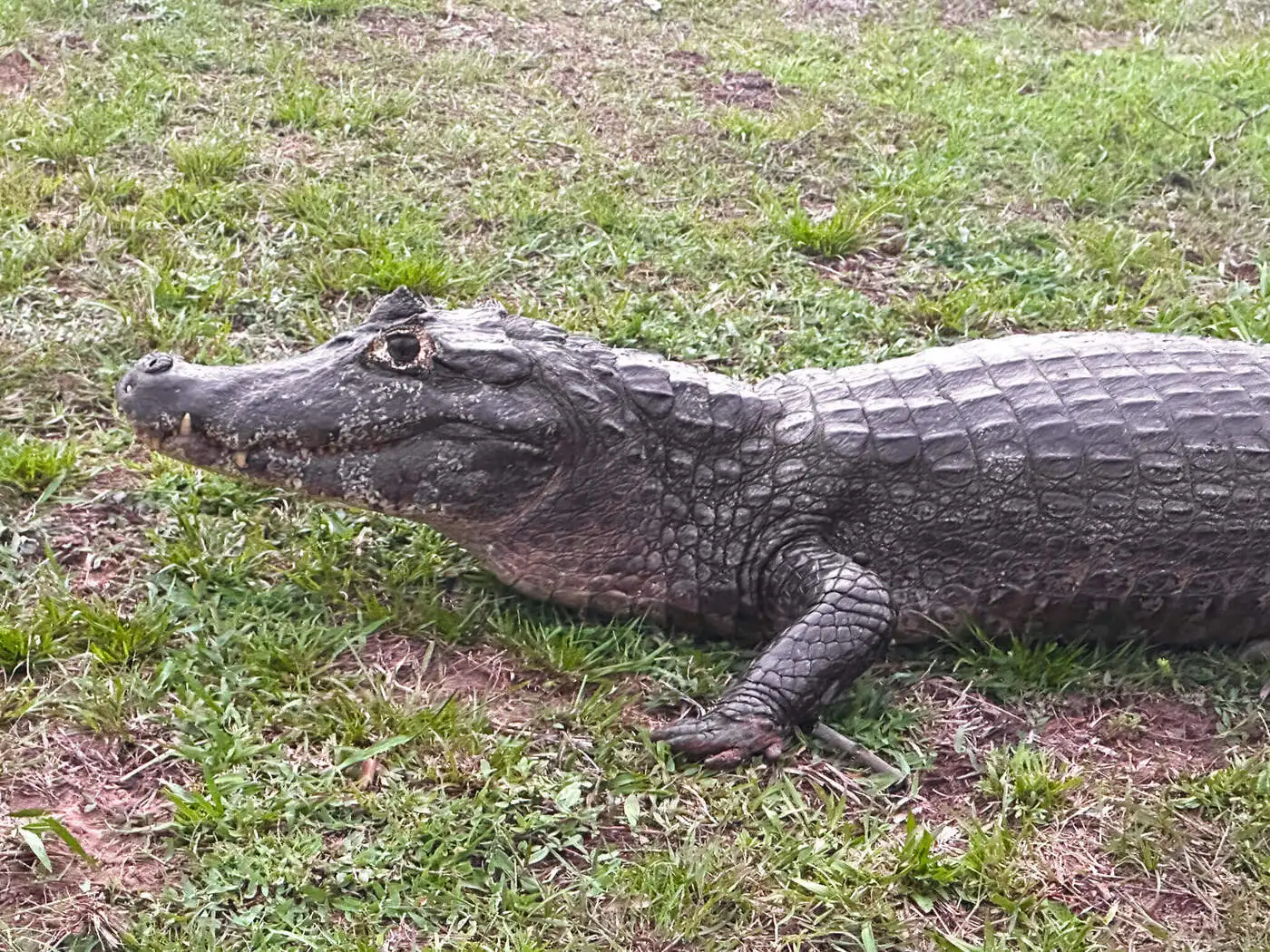
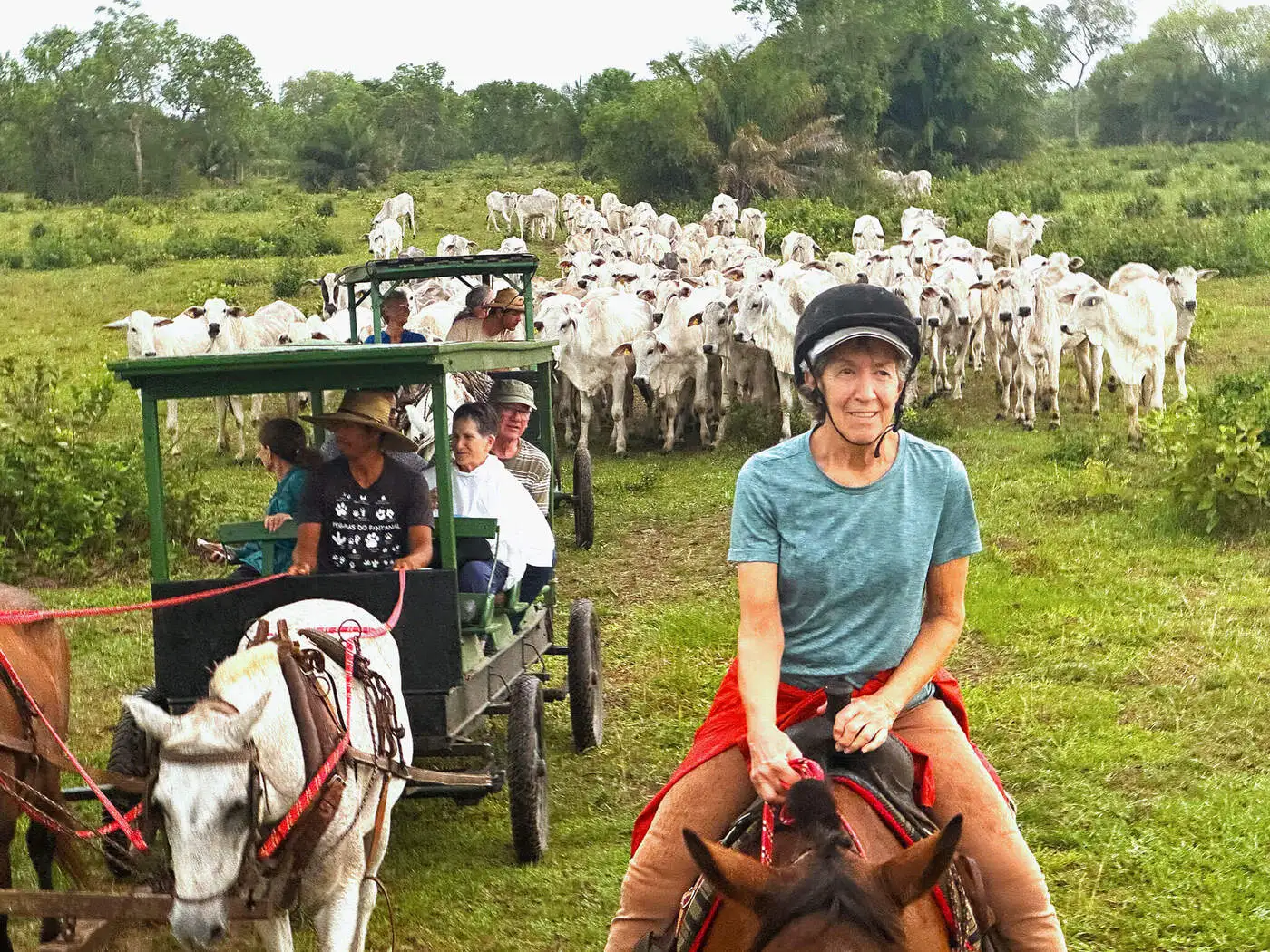
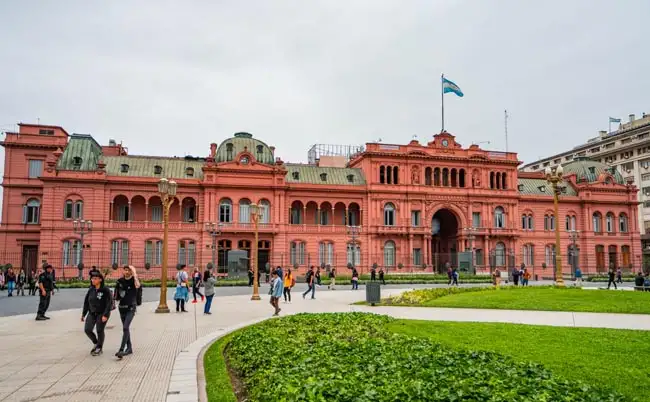
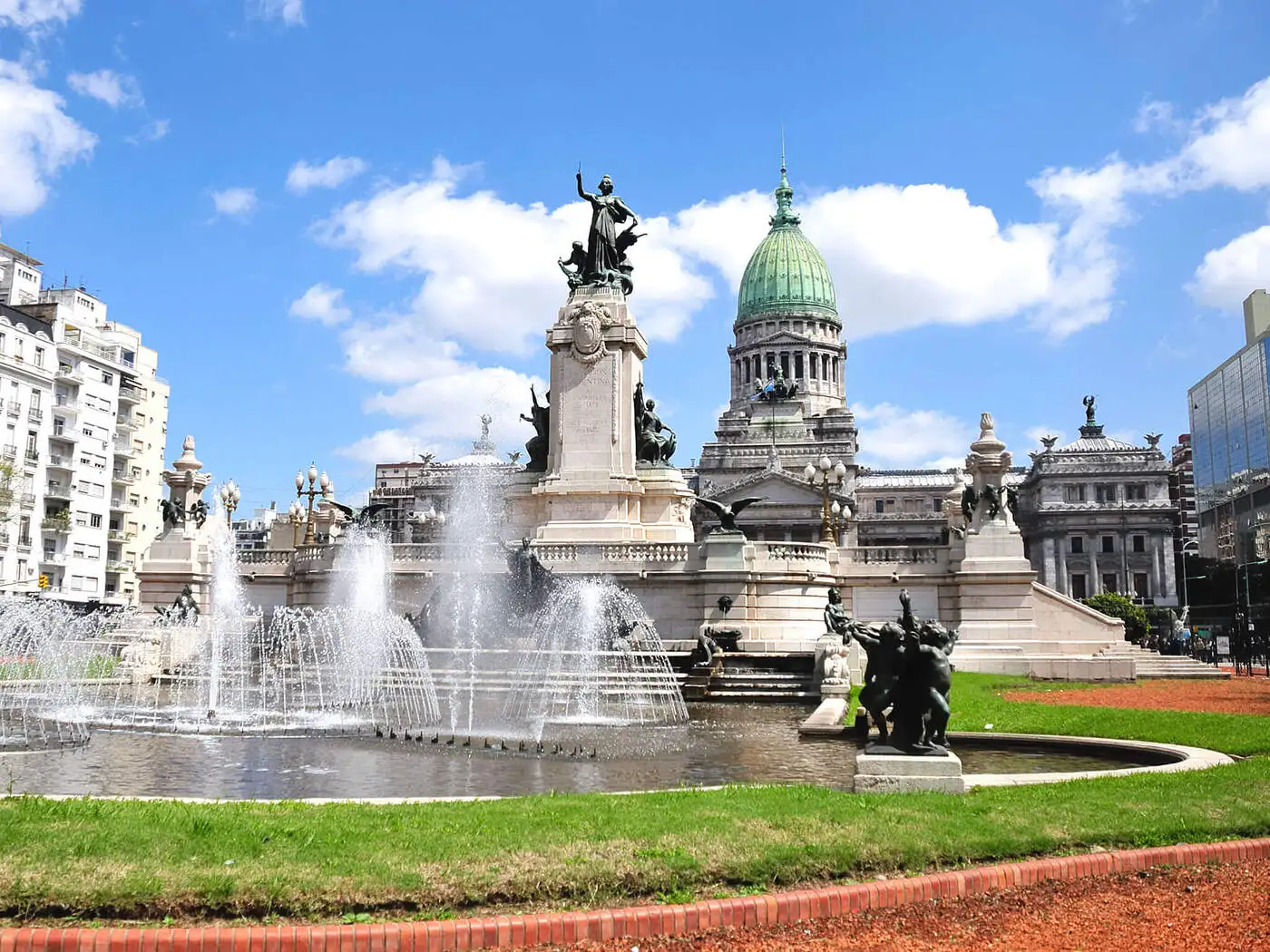
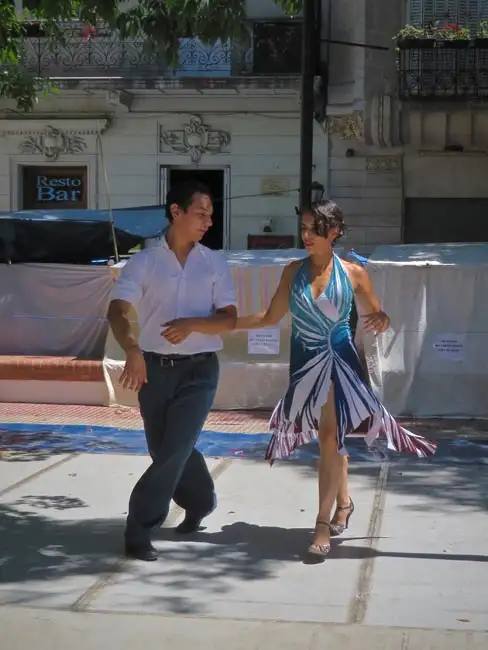
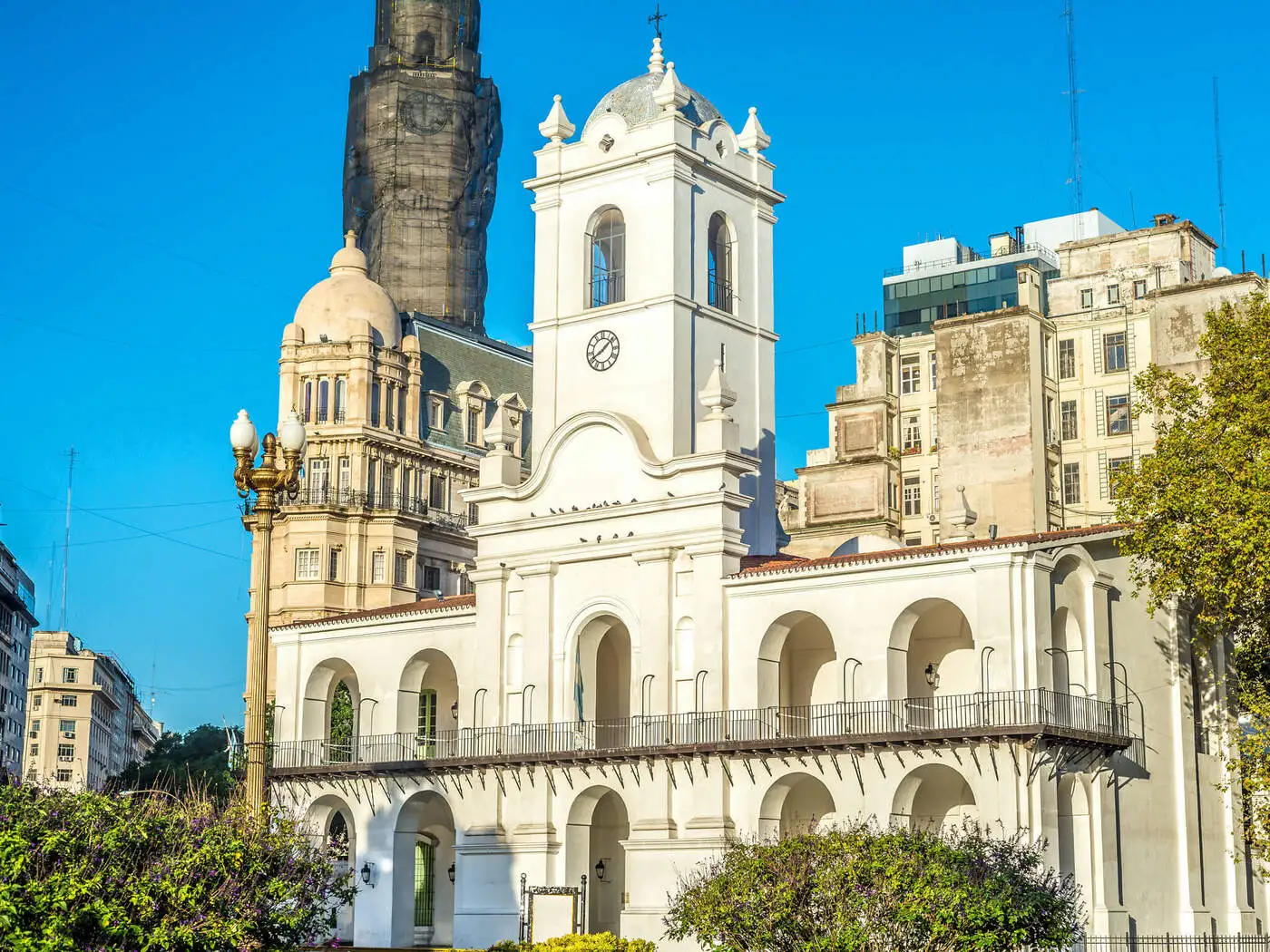
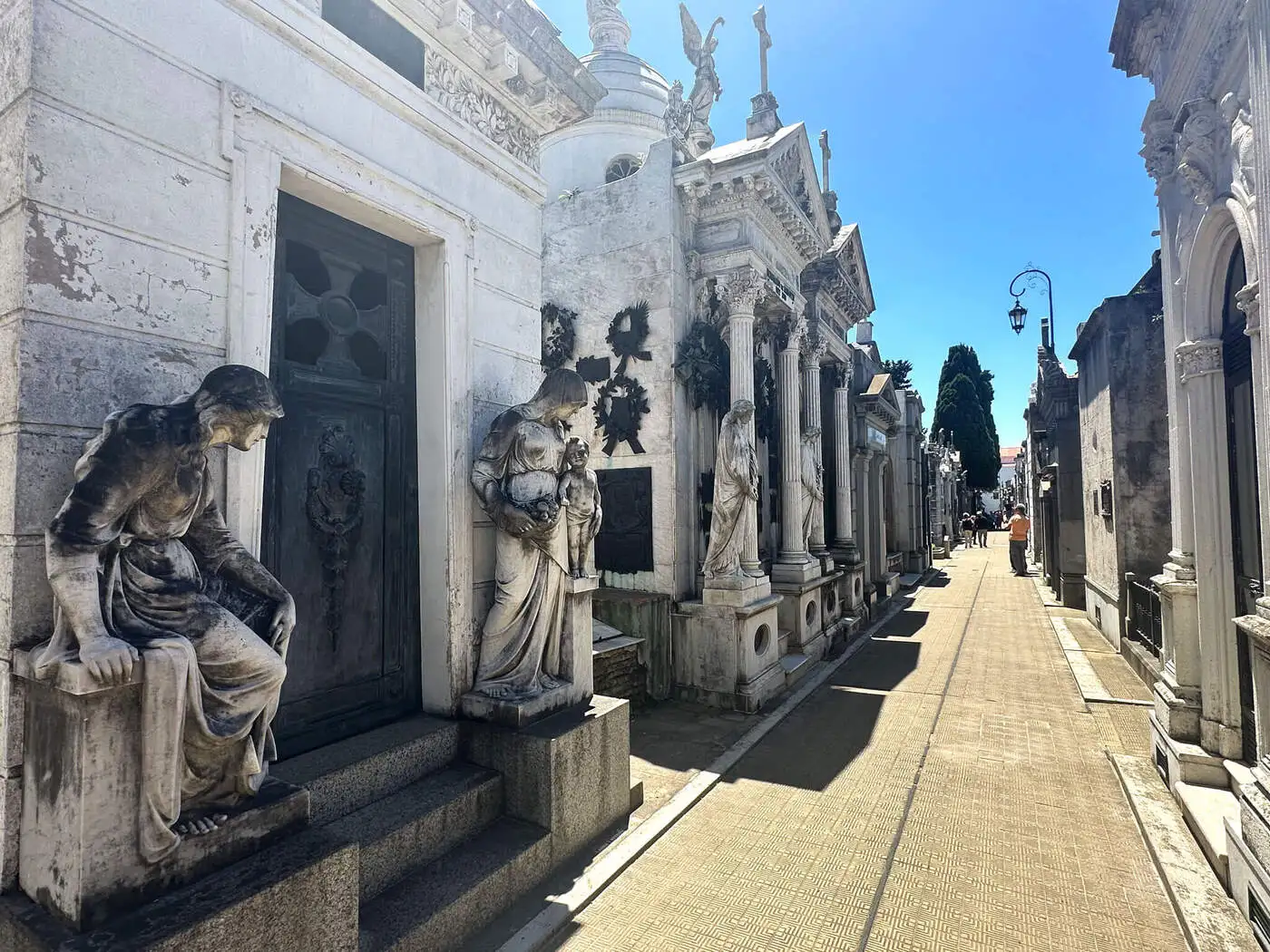
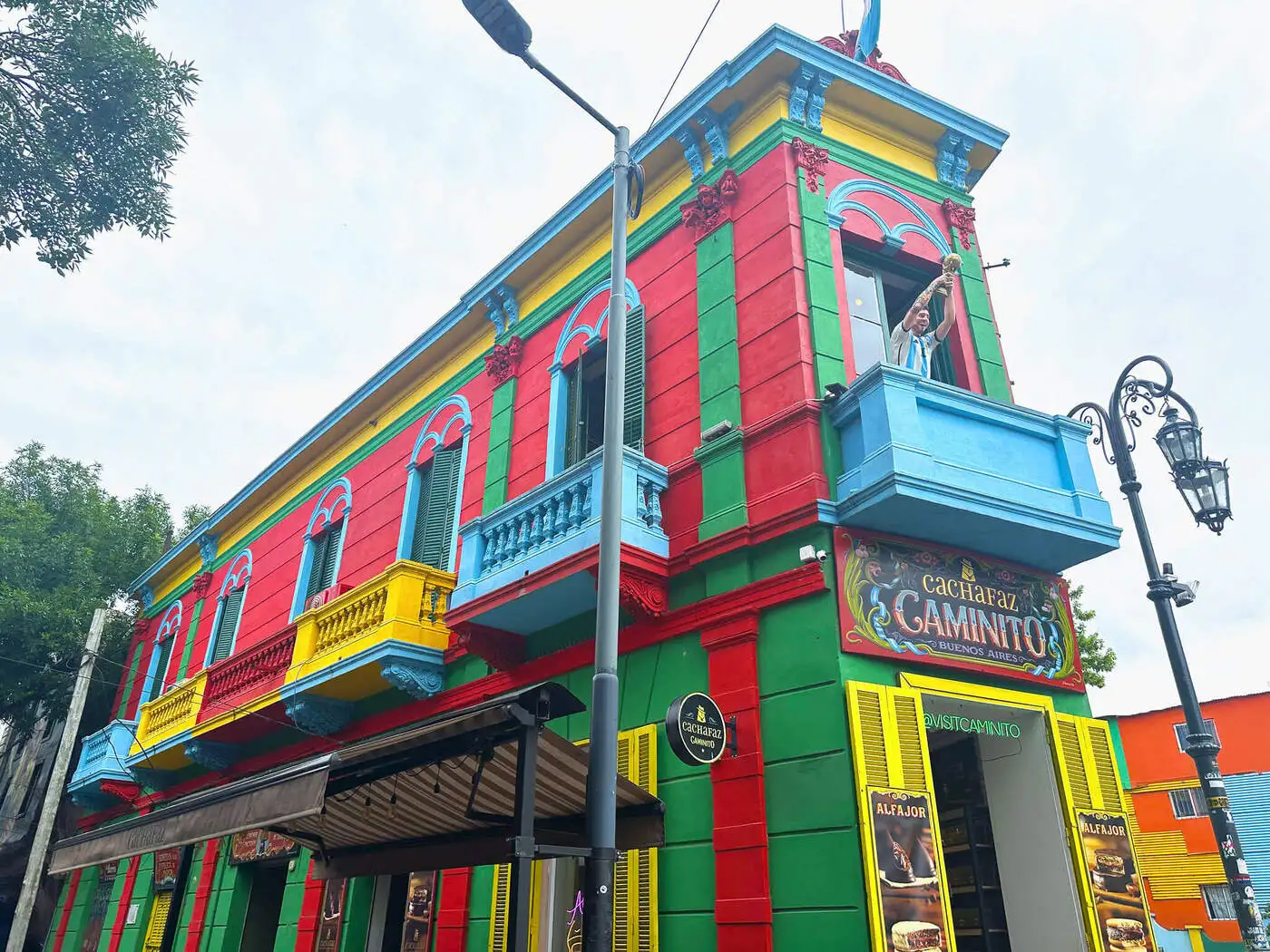
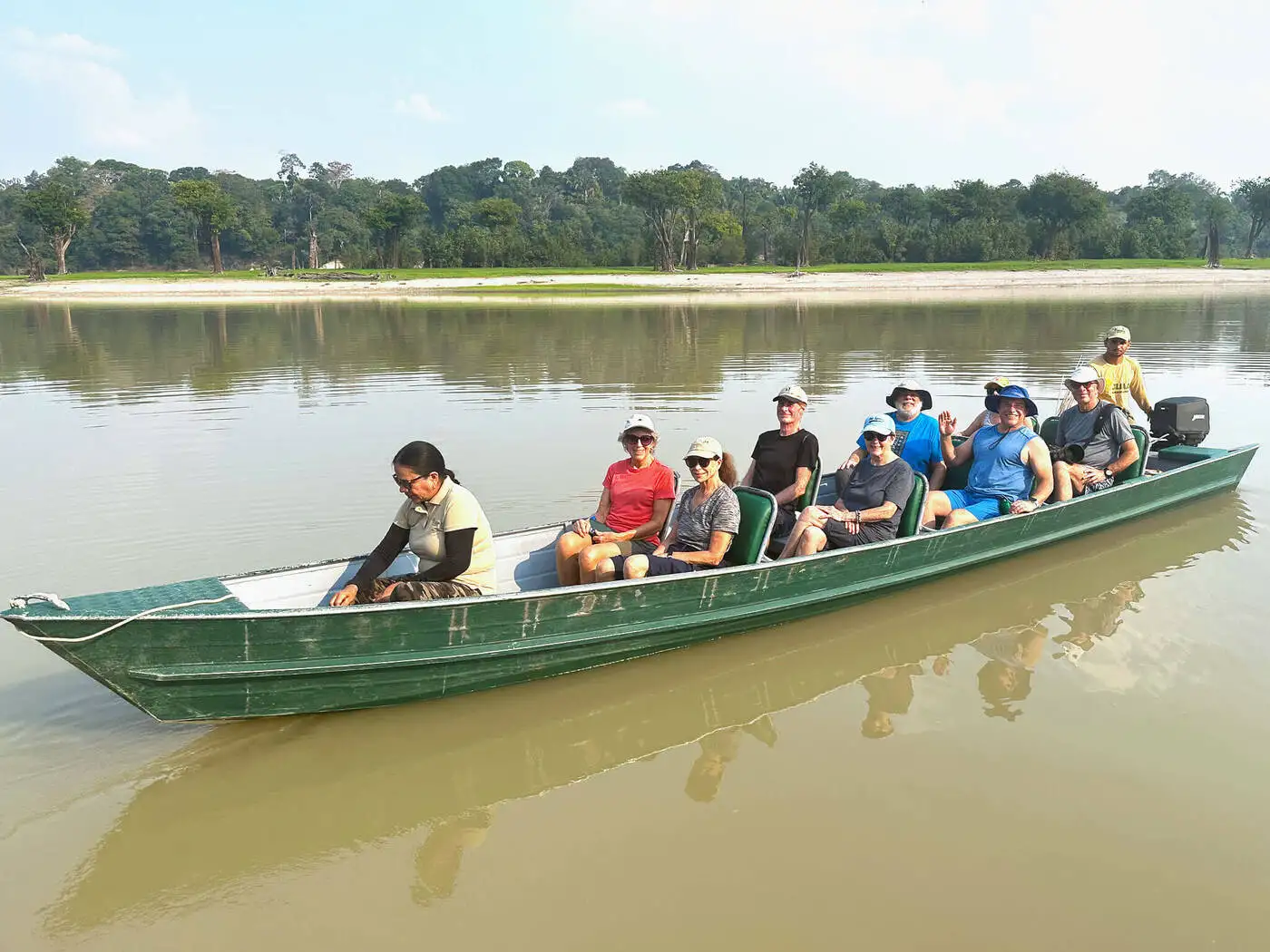
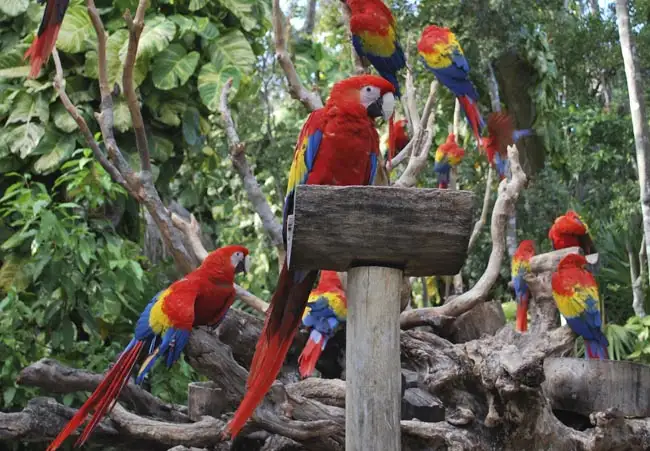
Excellent
Overall Rating
4.6
Extend Your Trip
This tour is part of a series that can be upgraded to make for a longer trip.
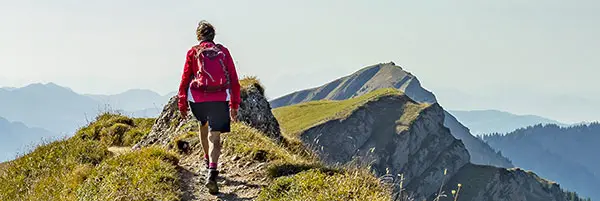
Fast and easy
Book this tour
Book your unforgettable adventure today! For any questions or advice, don't hesitate to contact us.
Have questions?
Contact Us
1-800-665-3998
- Final payment is due 90 days prior to departure.
- A non-refundable $1500 USD deposit is payable at the time of booking
- Optional Single Supplement: $3600 USD (number of singles limited).
This tour may require a mandatory single supplement charge of $1800 USD if you join our share program and we are unable to pair you. - Transferring to another tour or tour date is only permissible outside of 120 days prior to departure and is subject to a $100 USD change fee. (Read our cancellation policy for more info.)
- In order to secure internal air tickets, an additional pre-payment of $1500 per person is due upon "guarantee," after which your deposit and pre-payment become 100% non-refundable/non-transferrable.
Prices below are per person, twin-sharing costs in US Dollars (USD). Pricing does not include airfare to/from the tour and any applicable taxes. Get general information on flights to/from the tour.
Choose your departure date:
Frequently Asked Questions
- What is the maximum number of participants on a trip?Most of our tours carry a maximum of 18 participants; some tours (ie hiking tours) top out at 16. In the event that we do not achieve our minimum complement by our 90-day deadline, we may offer group members the option of paying a "small-group surcharge" as an alternative to cancellation. If all group members agree, we will confirm the trip at existing numbers; this surcharge is refundable in the event that we ultimately achieve our regular minimum. If the small group surcharge is not accepted, we will offer a refund of your deposit or a different trip of your choice.
- Can I extend my tour either at the beginning or end? What about stopovers?Yes, you can extend your tour either at the beginning or the end and we can book accommodation in our tour hotel. Stopovers are often permitted, depending on air routing. Stopovers usually carry a "stopover" fee levied by the airline.
- How do I make a reservation? How and when do I pay?The easiest way to make a reservation is via our website; during office hours, you are also more than welcome to contact us by telephone.
A non-refundable deposit is payable at the time of booking; if a reservation is made within 90 days, full payment is required. Some trips require a larger deposit. If international airline bookings require a non-refundable payment in order to secure space or the lowest available fare, we will require an increase in deposit equal to the cost of the ticket(s).
Early enrolment is always encouraged as group size is limited and some trips require greater preparation time.
Once we have received your deposit, we will confirm your space and send you a confirmation package containing your trip itinerary, any visa/travel permit related documents, invoice, clothing and equipment recommendations, general information on your destination(s), and forms for you to complete, sign and return to us. Your air e-tickets (if applicable), final hotel list, final trip itinerary, and instructions on how to join your tour, will be sent approximately 2-3 weeks prior to departure. - What about cancellations, refunds, and transfers?Please review our cancellation policy page for details.
- I am a single who prefers my own room. What is a single supplement?All of our tours have a single supplement for those who want to be guaranteed their own room at each location.
This supplement is a reflection of the fact that most hotels around the world do not discount the regular twin-share rate for a room by 50% for only one person occupying a room. Most hotels will give a break on the price, but usually in the range of 25-30% of the twin-share rate. This difference, multiplied by each night, amounts to the single supplement.
The conventional amount can also vary from country to country and some destinations are more expensive than others for single occupancy. In order to be "single friendly," the supplements we apply are not a profit centre for us and we do our best to keep them as reasonable as possible.
On most tours we limit the number of singles available, not to be punitive, but rather because many hotels allow for only a limited number of singles; some smaller hotels at remote locations also have a limited number of single rooms available.
Please note that most single rooms around the world are smaller than twin-share rooms and will likely have only one bed. - Do you have a shared accommodation program?Yes! If you are single traveller and are willing to share, we will do our best to pair you with a same-gender roommate. On most of our tours, if we fail to pair you, we will absorb the single supplement fee and you will default to a single room at no extra charge. At some destinations, however, where single rooms are not significantly discounted, or not at all, we may apply a "mandatory" single in the event that we cannot find you a share partner. This is usually 50% of the usual supplement, but can be as much as 100%. If applicable, this proviso will be noted on each tour page on this website, on your invoice, and in our tour date/price book (available for download under "Resources").
Please choose a departure date!
